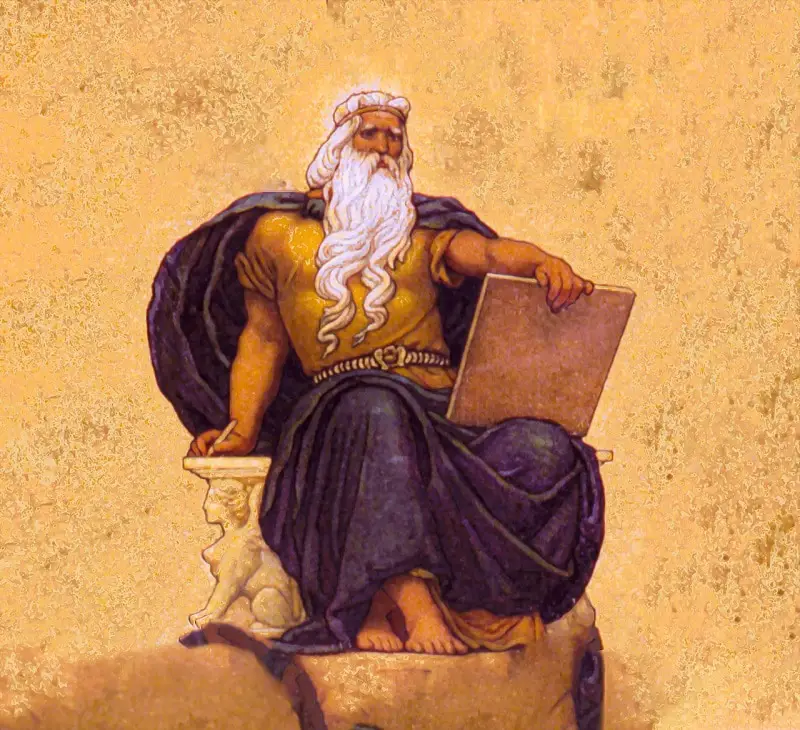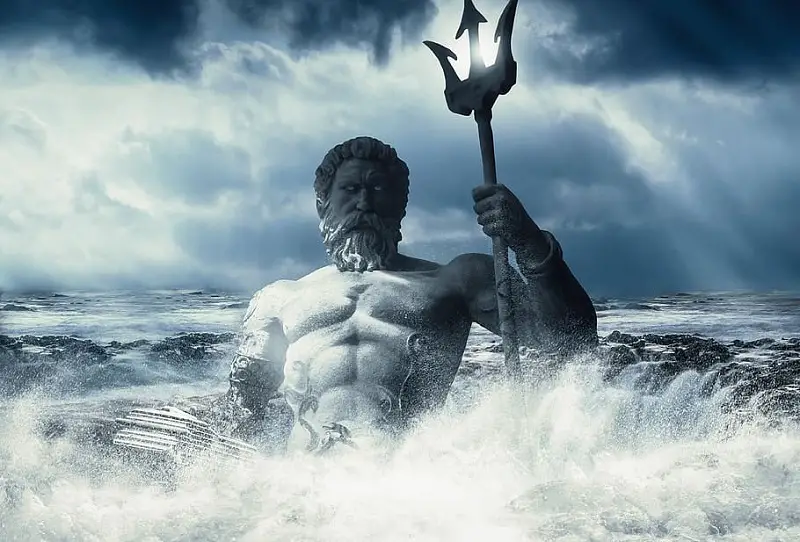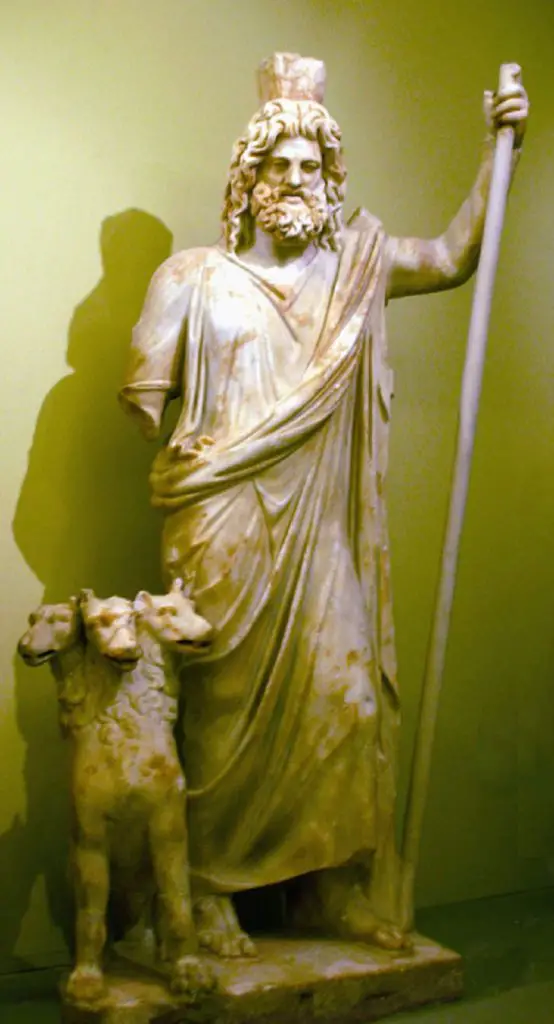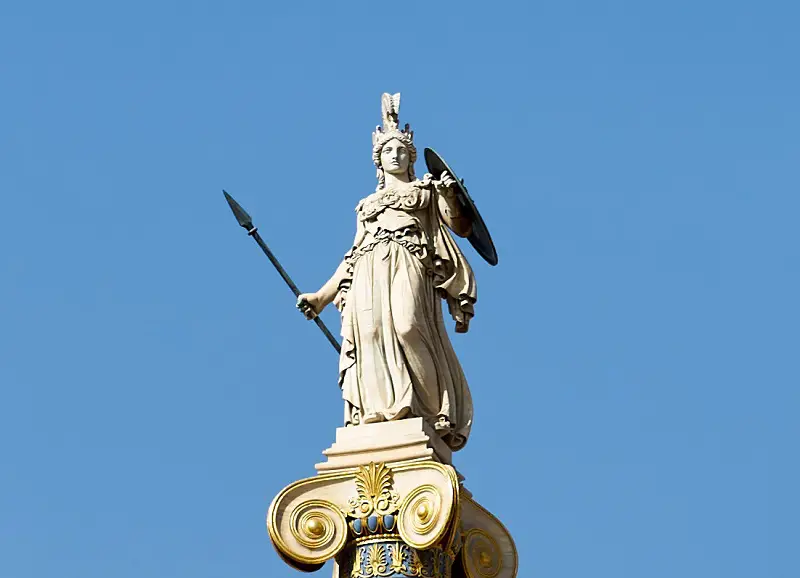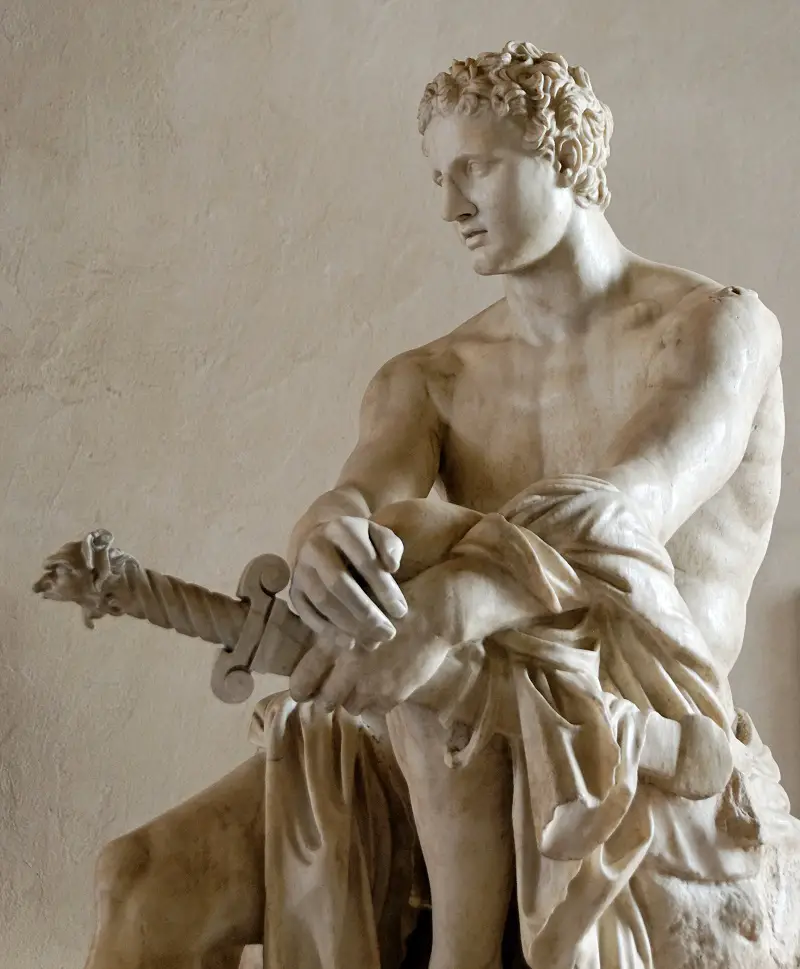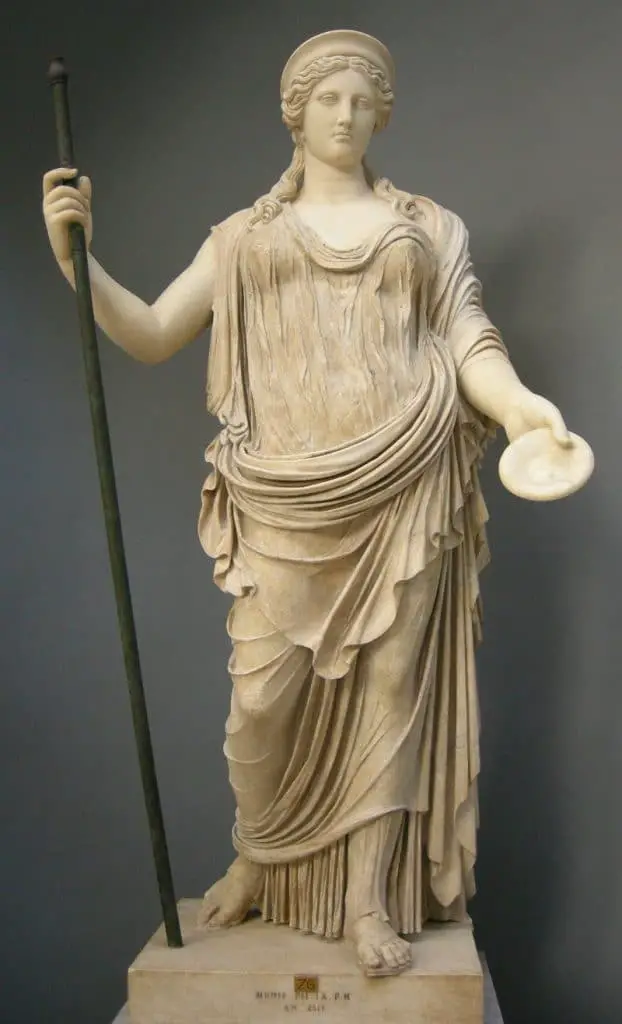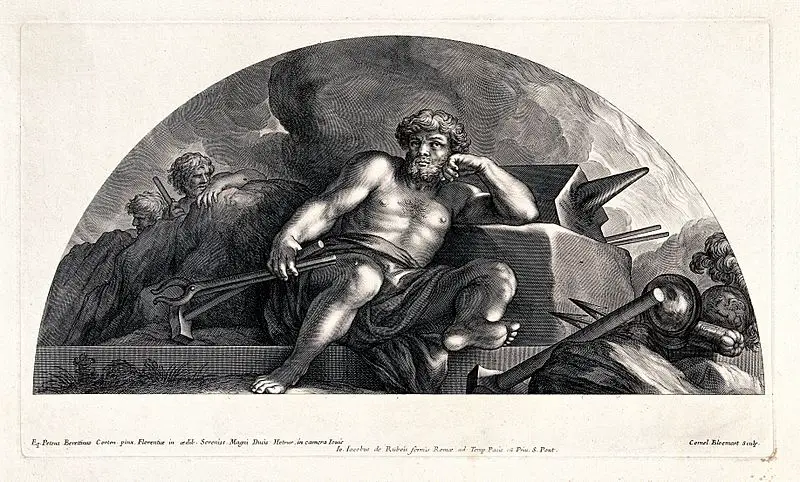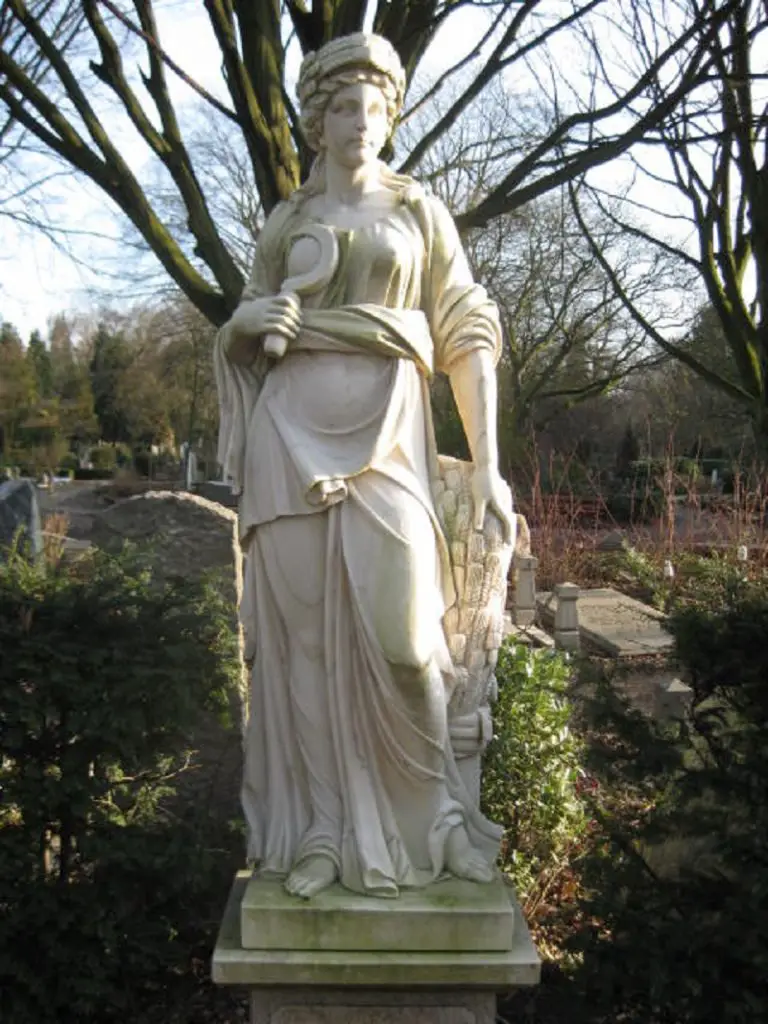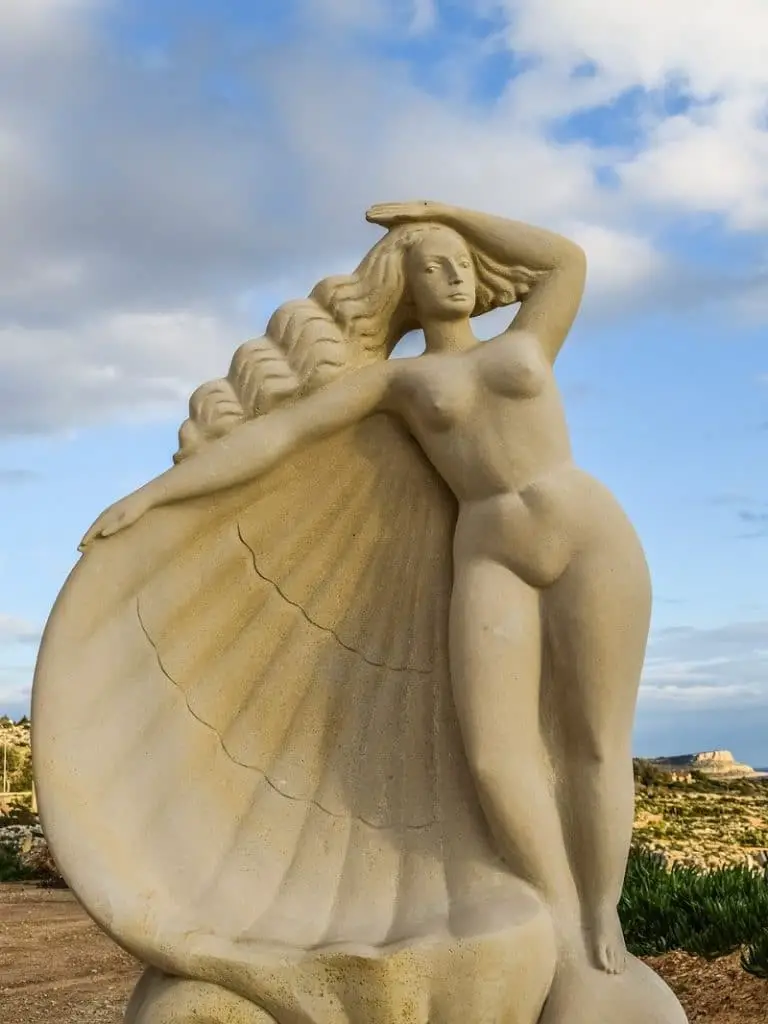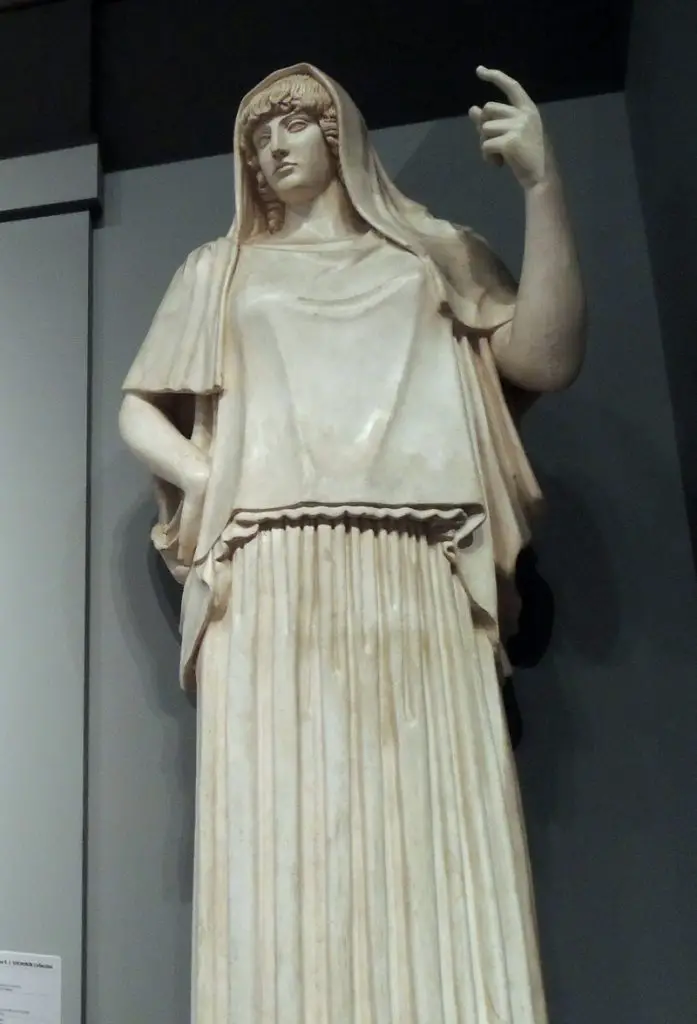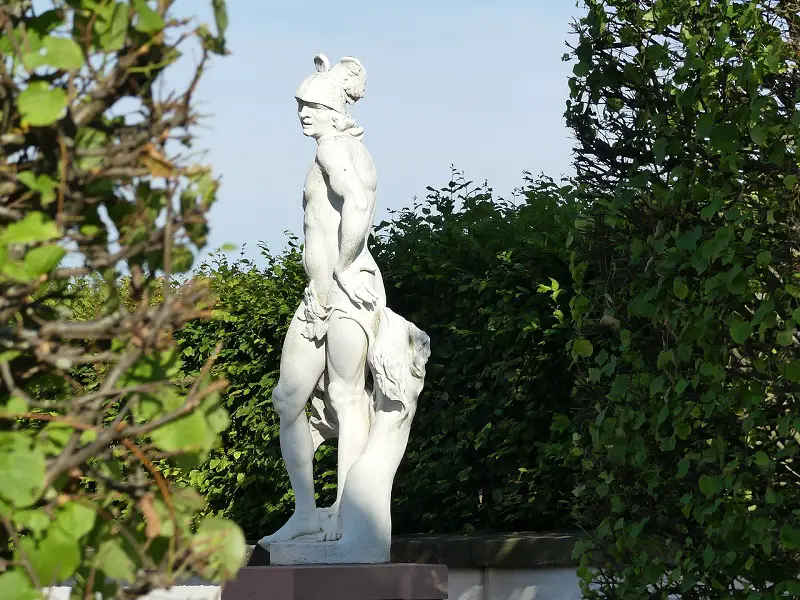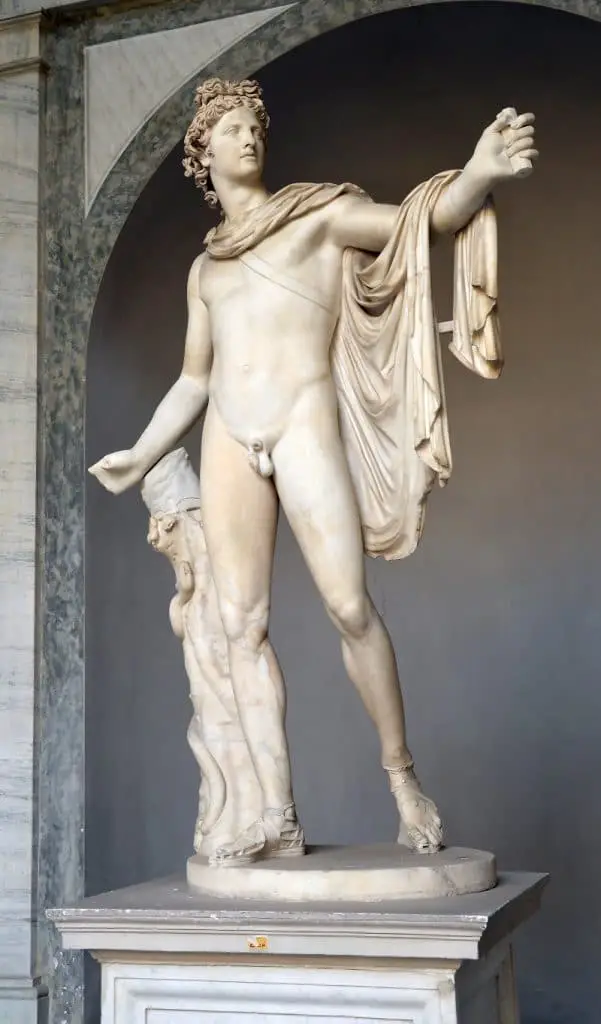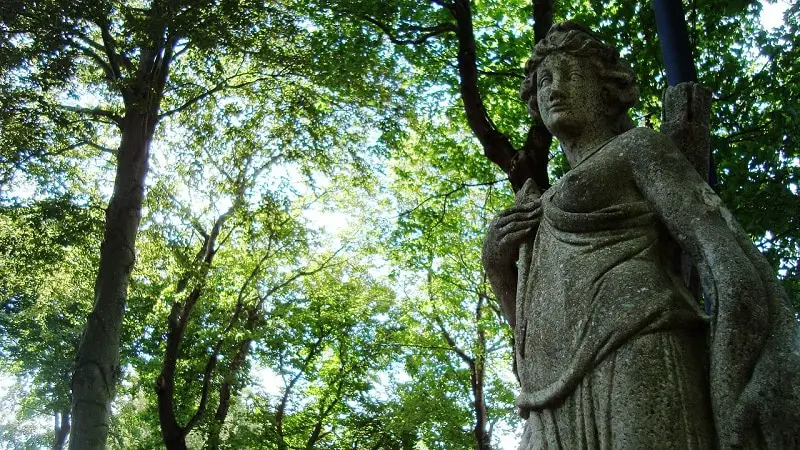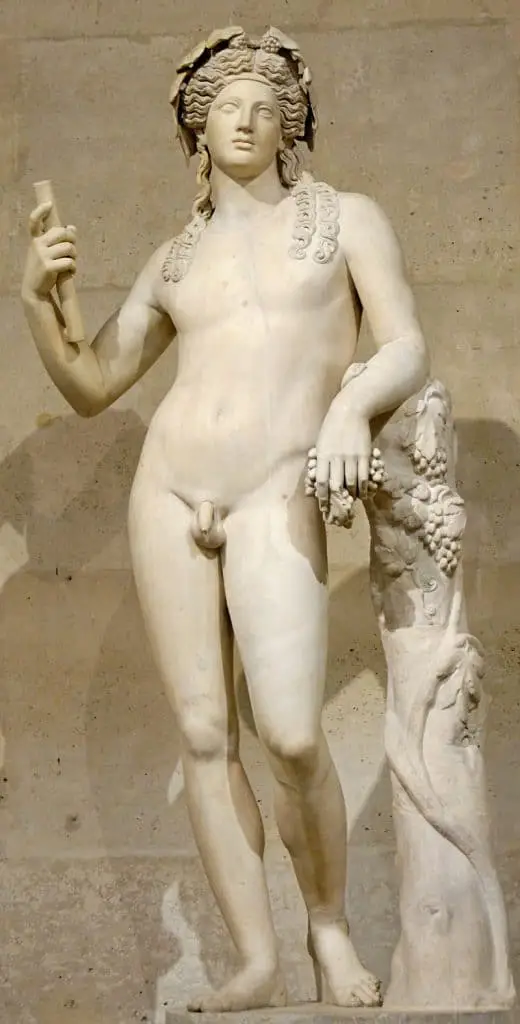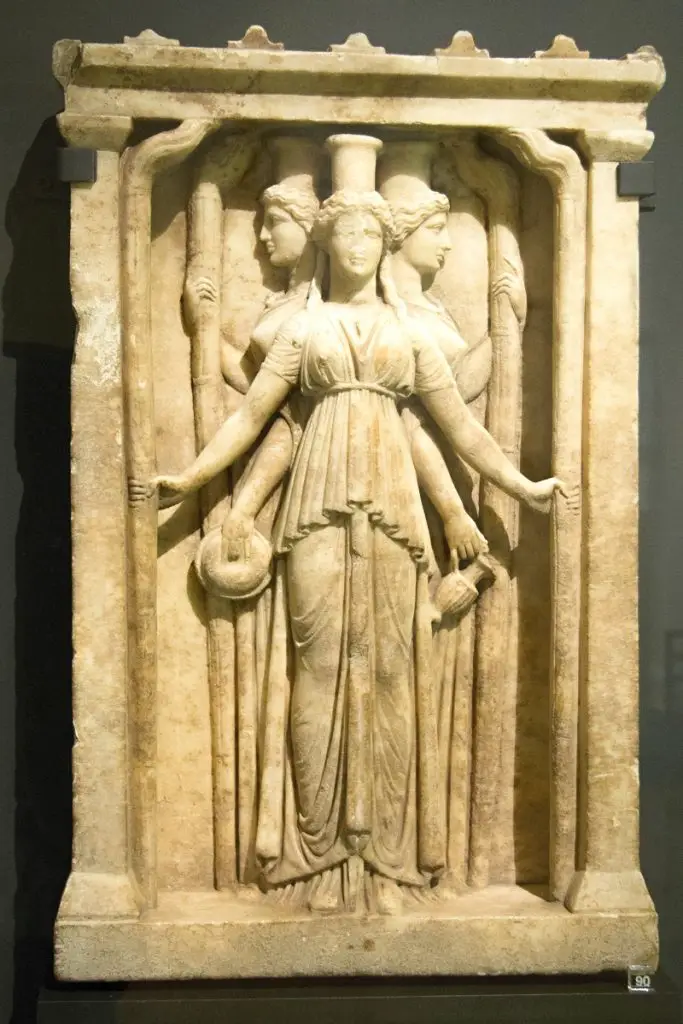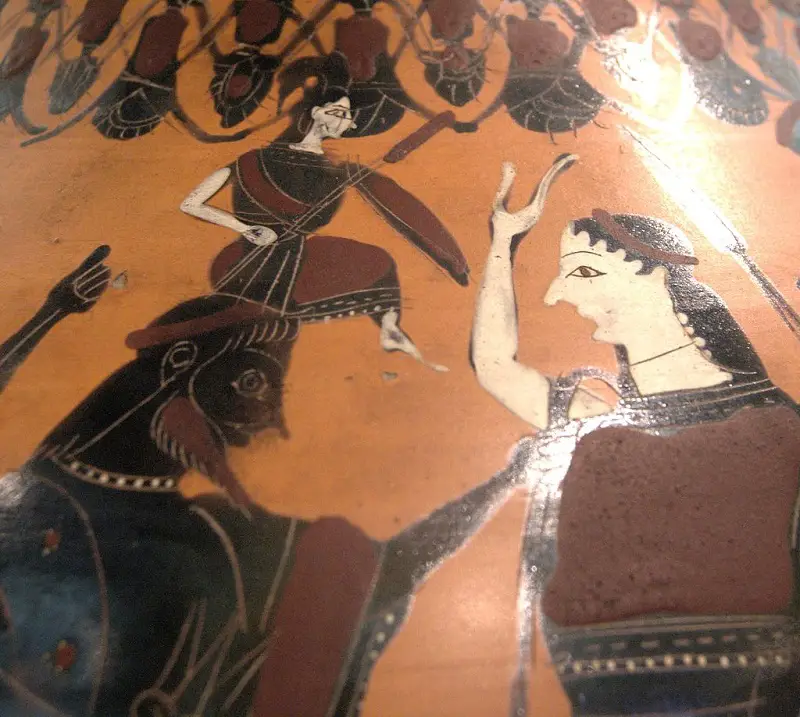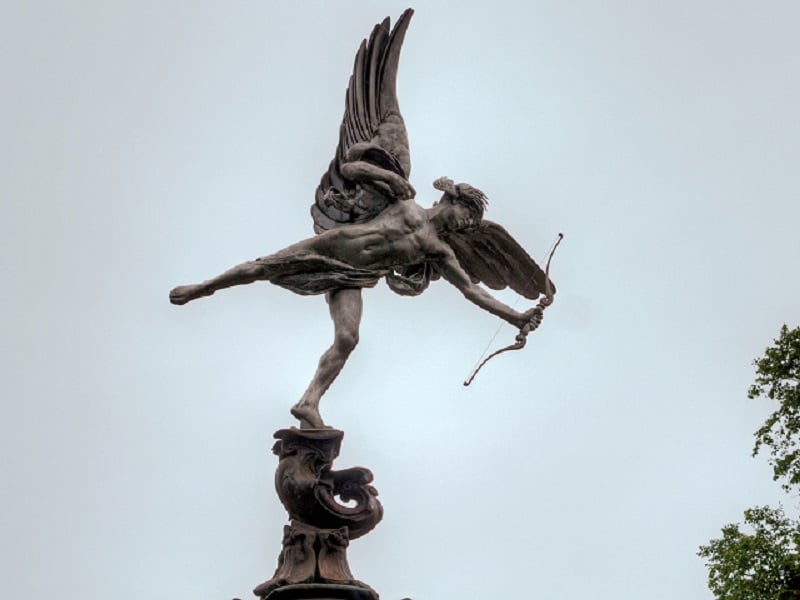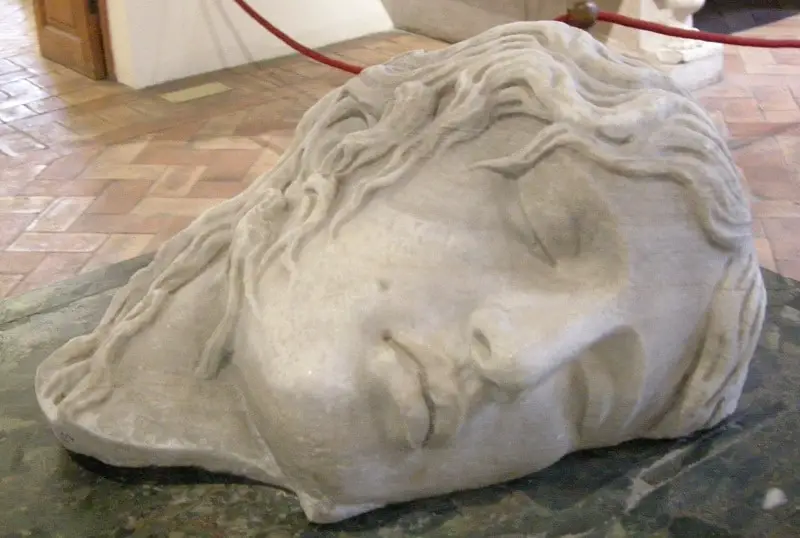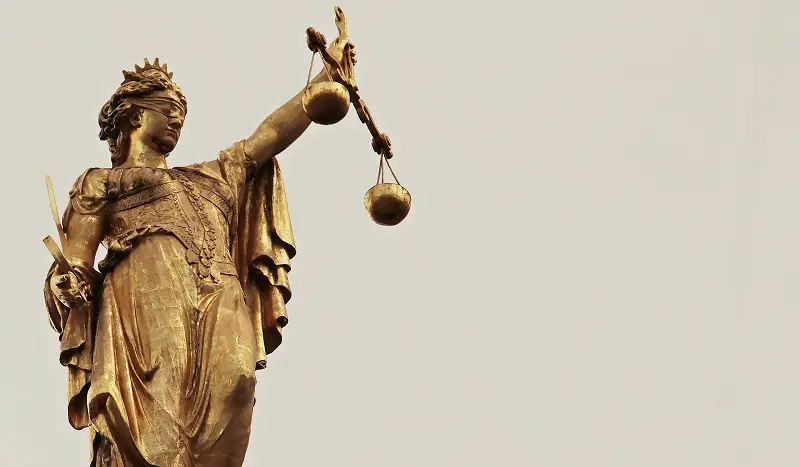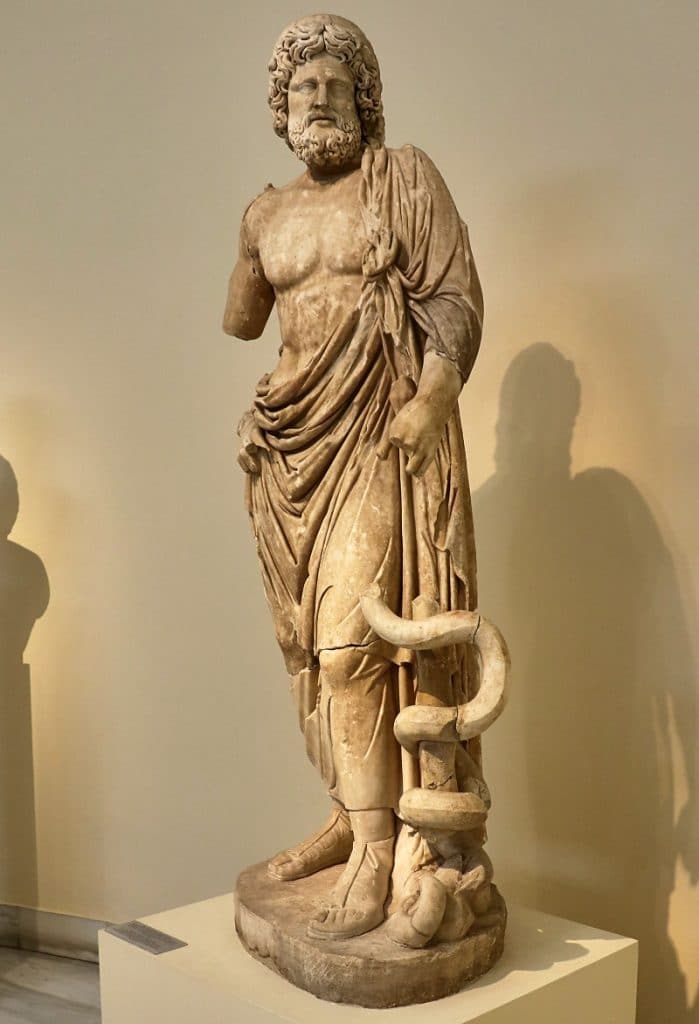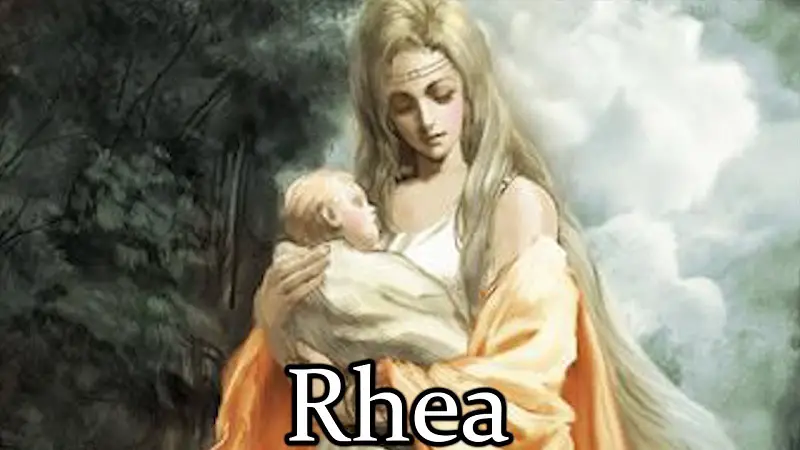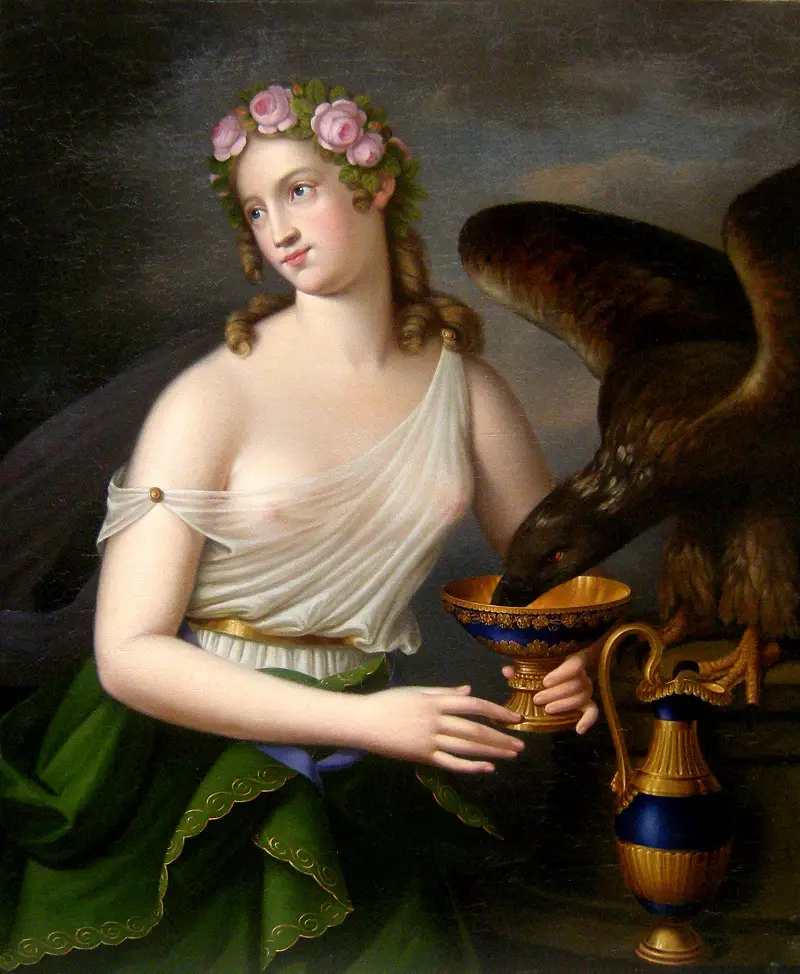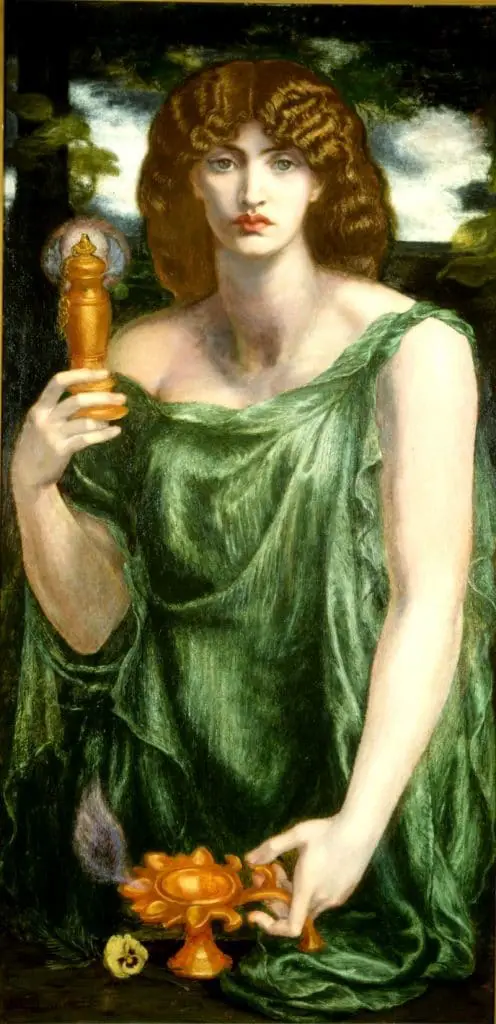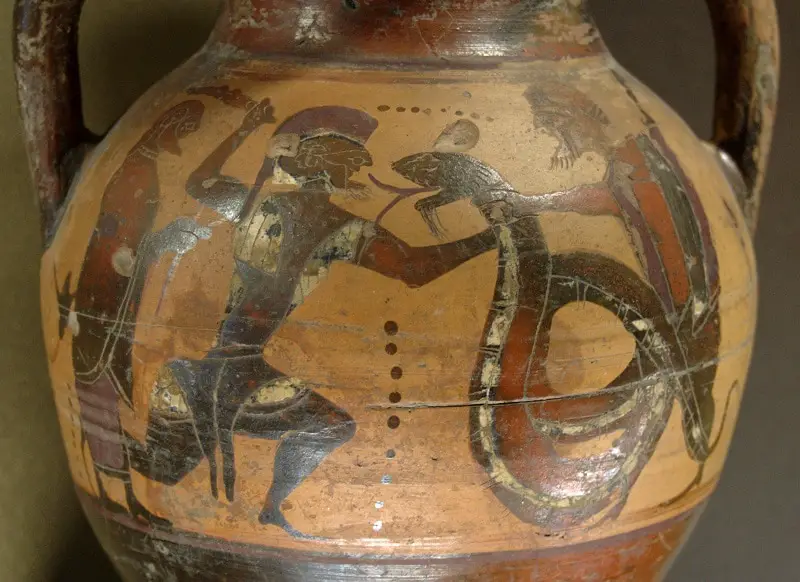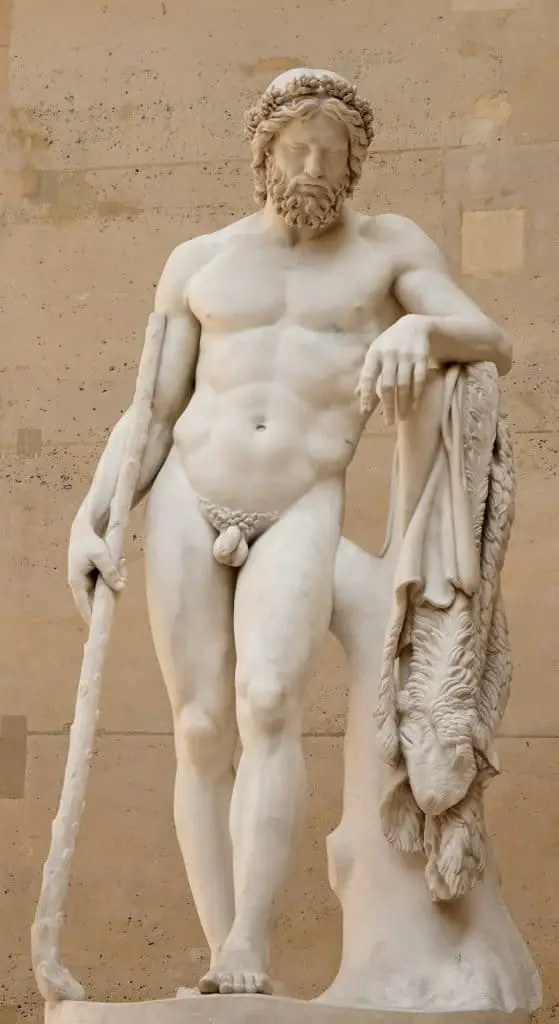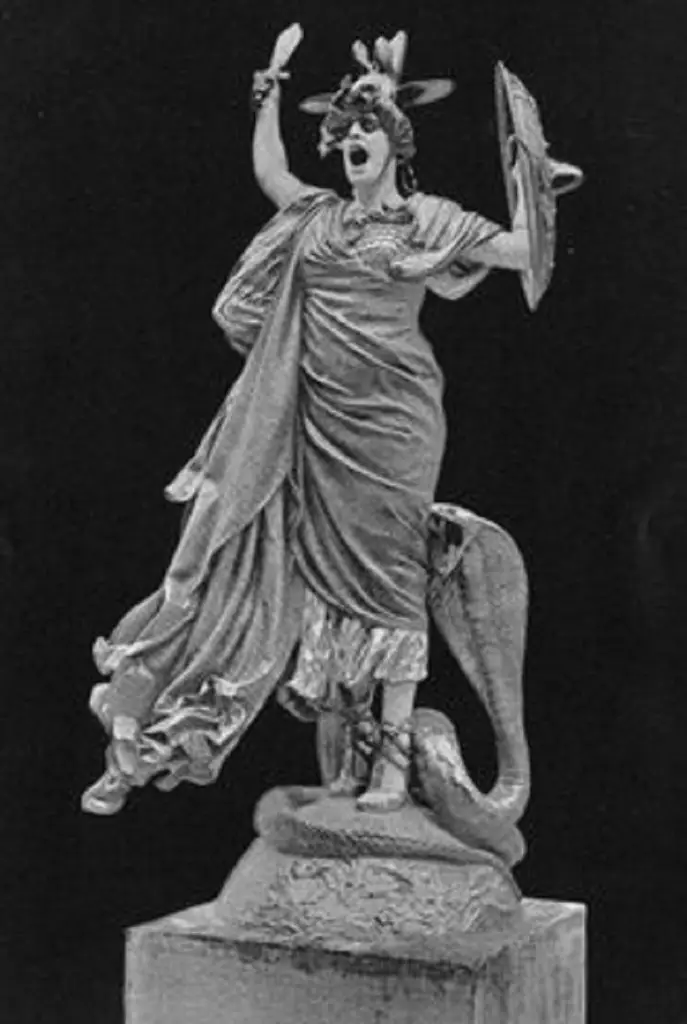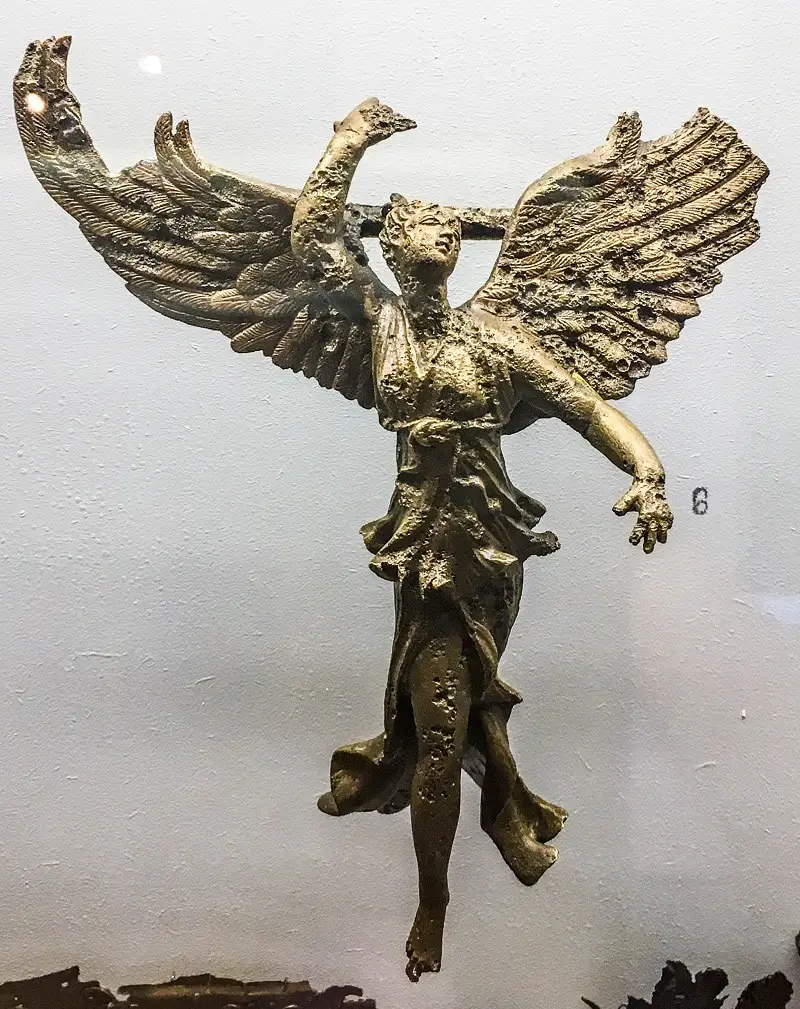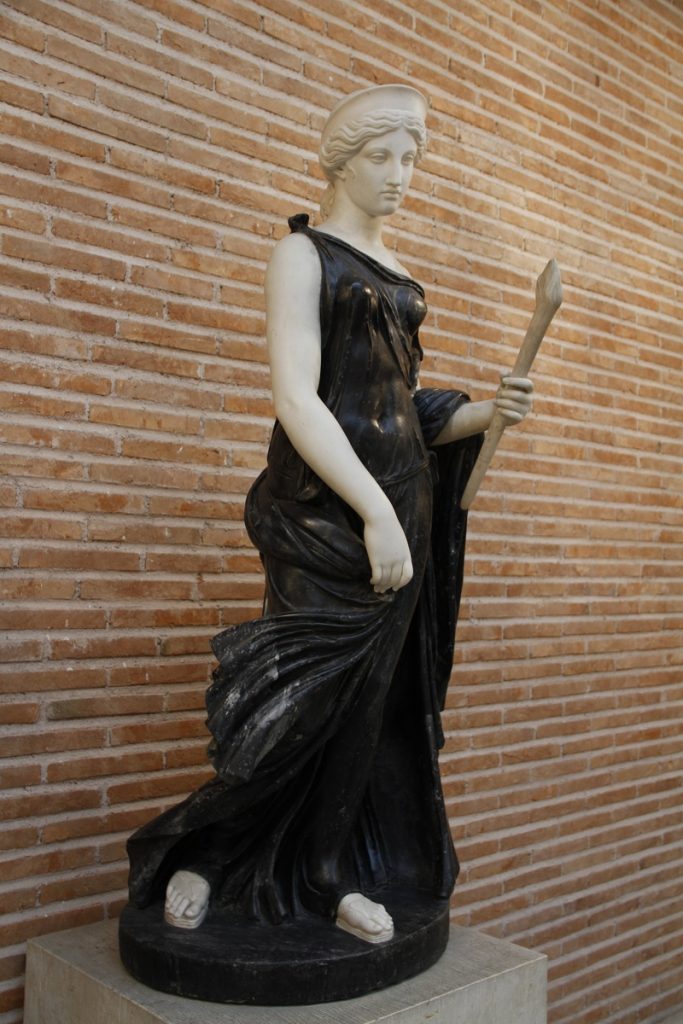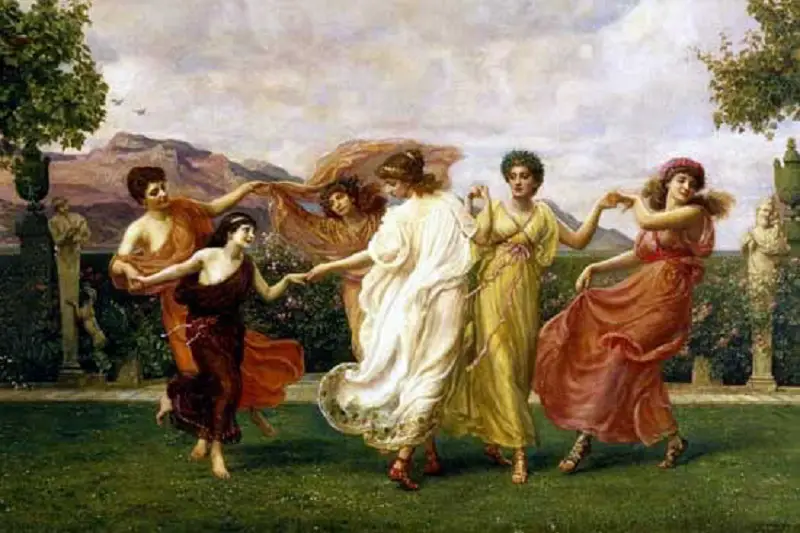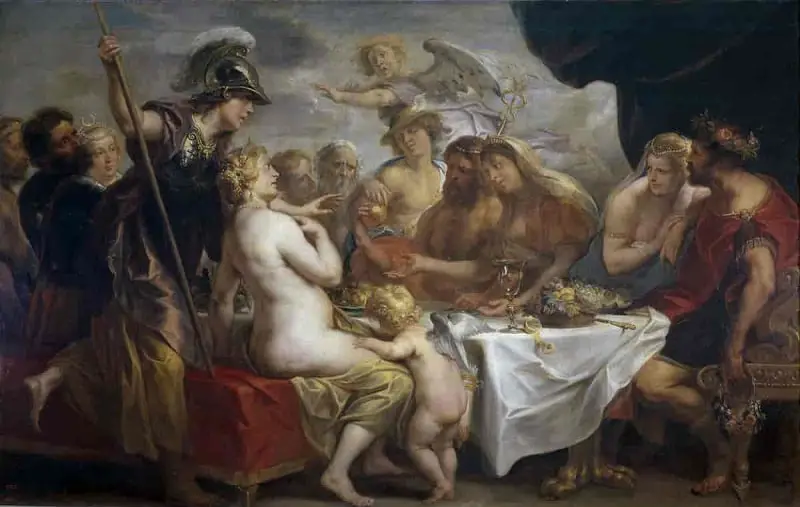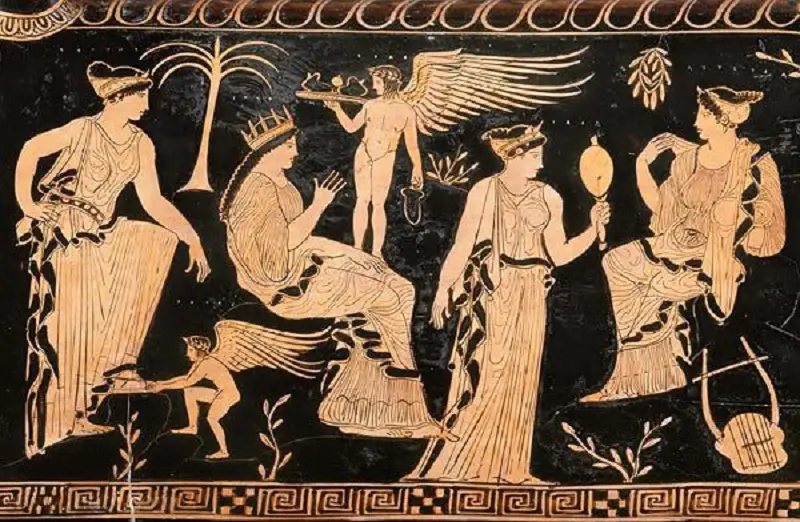For more than two millennia, ancient Greek mythology has continued to fascinate and be a huge source of inspiration for hundreds of cultural works. Certainly, the chaotic size of ancient Greek mythology continues to be the subject of study by thousands of scientists and educational institutions even to this day, who try to analyze all these mythological stories, which can be related to corresponding natural phenomena and historical events while understanding the socio-political conditions of that time. The term Greek mythology covers all that set of myths associated with the ancient Greek tradition, as presented in the ancient texts of Homer and Hesiod.
This narration of the mythical stories created by the ancient Greeks, concerned their gods and heroes, giving the explanation they sought about nature and the creation of the world around them. The impressive collections of stories about the origin of the world and the gods of humanity, do not leave anyone impartial and are definitely addressed to any man who is looking for information that will captivate him and spark his own imagination. So the ancient gods may be products of vision of the ancient Greek civilization, but this does not mean that these stories have nothing essential to teach us even to this day and age.
As mentioned, Herodotus was the one who attributed the formation of this ancient religion to the works of Homer and Hesiod. According to Herodotus, these two epic poets created the Greek theogony, gave names to the gods, defined the ways and ritual practices of their worship and established their individual qualities.
Each god individually but also the deities that act in groups (e.g. Nymphs, Sirens, Cabeiri, etc.) are distinguished for their unique qualities, for their different spheres of influence and their limits of power, for their love life and moral or their immorality, and the honours bestowed upon them by men, both in the fields and in the city. There was also the introduction and assimilation of deities from other ancient civilizations that became involved with the ancient Greek people.
Studying these divine forms of mythology, we discover that the human and divine worlds interact and reflect each other. So the ancient gods may belong to the same world as mortals (on Mount Olympus), but they are free from all the negative characteristics that accompany human existence: agony, weakness, toil, disease and death. In essence, the gods embody all the values and ideals of human life, that is, beauty, strength, eternal youth, marvellous and glorious living. The presence or absence of gods in a society determines the abundance of welfares, perfection and the acceptance of moral values or not, such as hospitality, honesty and vigour.
When we refer to the ancient gods of Greece, everyone has in mind the total of the twelve famously ancient gods. They are certainly the main gods of Greek mythology, but the concept of the twelve gods was formed by the scholars of the 16th and 17th centuries, mainly in the areas of Western civilization. In reality, however, the ancient Greeks did not have a specific number of twelve gods in mind; on the contrary, there were small and large gods in importance, who were worshipped locally. So regardless of their number, for which uncertainties and questions have been created, we know for sure that some of them have climbed Mount Olympus, while others, respected and popular, were never allowed inside.
Studying the basic gods of mythology, we find that many gods associated with the Underworld are missing. The most probable explanation is that man considers death to be a human characteristic and that immortality becomes the main feature of the gods. The gods and goddesses who happen to “fall” into heroes and heroines are punished with death because it is treated as a form of penance. That is why the gods themselves turned away from the various manifestations of ancient citizens in honour of death, such as, for example, the annual celebration of Anthesteria in Attica.
So since the ancient Greek gods of mythology had many similarities with humans, another element that we would say they “borrowed” from them is the structure of their own family. The gods are organized into a distinct family whole, which consists of parents, children, siblings and uncles. However, the gods of the so-called first generation are also involved in other kinds of relationships which further complicate the whole situation.
For each god, there is a separate genealogical tree, with his/her origin, marriages and descendants, which can be either other deities, main or secondary, or even heroes, which they acquire from their union with mortals.
An examination of all the facts concerning the gods shows that each god in his essence has much more extended qualities and responsibilities than those handed down by Homer’s works. The restriction occurred after the reign of almighty Zeus as the supreme god, so many gods and goddesses submitted to him as his children.
At Lazy Penguins we gathered information about these epic deities and would like to share them with you. So without further delay, let us first explore the twelve most famous gods of Olympus and then we will interpret the lesser-known but equally important gods of ancient Greek mythology, introducing you to the 40 leading and most important gods of ancient Greece:
1. ZEUS
Other names: Deus, Epoptis, Panoptis, Epopsios, Evryops, Panoptis, Epitimitor, Epopetis etc.
Symbols: Lightning, eagle, bull and oak
Celebrations in his honour: Dipoleia
Ancient Temples: Temple of Zeus at Olympia, Temple of Olympian Zeus at Athens
We couldn’t start this list with anyone other than the almighty and famous god Zeus. Zeus was the supreme god of the Pantheon of Olympus and the ancient people of Greece. His role was to supervise and rule the world. He was considered the father of all gods and men. He protected the foreigners, the vows of the faithful, the cities, the houses of the people and took care of their overall prosperity. He was the one who provided for everything in humanity.
It is expected for the leader of Olympus that many regions dispute and claim among themselves for his origin. Thus, in addition to the hundreds of theogonic myths, there are many variations related to his birth. The tales that are more widespread in the general public and others that are better known locally are surviving in ancient books and accounts. There is nevertheless a central axis, around all these variations of the stories.
At the core of every story, there is Cronus, the king of the immortals and father of Zeus, who, after being informed by his parents, Uranus and Gaia, that he would be dethroned by one of his children, he swallowed every child was born by his wife Rhea. At the moment of Zeus’ birth, Rhea decided to give birth secretly and give Saturn to swallow, instead of Zeus, a swaddled stone, in order to deceive him. From this point on, the myth splits to its dozens of variations and hundreds of stories had been created.
When Zeus grew up, he freed the rest of his brothers who were in Cronus’ womb, starting a war between the gods and the titans, which lasted ten whole years. At the end of the war, the Olympians won the battle, with Zeus establishing his kingdom. According to Homer, the territory that belongs to every god is due to a draw that happened between them. Thus Hades got the Underworld, Poseidon got the sea and Zeus the sky.
The official religion accepted Hera as the legal wife of Zeus, with whom he acquired Hebe, Hephaestus, Ares and Eileithyia. Zeus and Hera were also the protectors of the concept of marriage. However, it is reported that he had many more children with various women. But this wasn’t due to his “erotic nature”, but to the fact that the rulers of the time wanted to be proud of their descent from Zeus.
During the Hellenistic years, Zeus had become a world god and a symbol of the idea of divinity in every possible form. He was identified with several deities such as the god Ra of Egypt and Savazio in Syria, among others.
2. POSEIDON
Other names: Gaios, Enosichthon, Ennosigaios, Mochleftir, Seisichthon, Damasichthon, etc.
Symbols: Trident, fish, dolphin, horse and bull
Celebrations in his honour: Posideia, Poseidonia, Skira, Haloa
Ancient Temple: Temple of Poseidon at Sounio
In Greek mythology, Poseidon is one of the main Olympian gods, the supreme god of water (lakes, rivers, springs) and by extension, the sea. According to the Hesiodic Theogony, Poseidon was the son of Cronus and Rhea, who had also suffered as a newborn the tragic fate of the rest of his brothers. He joined the fierce Battle of the Titans that followed, in which Poseidon also took part, alongside his brother, where he supported in the glorious victory of Zeus against the uncontrollable forces of nature. The three brothers Zeus, Poseidon and Hades, became the great trinity of gods on the universe in people’s perception of time.
Thus, after the defeat of the Titans and the fight against the Typhon, which was the last act of the Battle of the Titans, Zeus settles in the upper zone as the only heavenly father, supreme master of “visible and invisible” things (according to Aeschylus), and Poseidon takes over of the kingdom of the sea that supports the land and also becomes the great overseer of Tartarus, while Hades takes over the realm of the Underworld.
The main symbol and emblem of Poseidon is the trident, which was both a sceptre of recognition and a weapon of enforcing his will. With it, depending on either the sea or the rocks, it caused natural disasters, storms, earthquakes, sinkings, volcanic eruptions, etc. But it also caused conversely peace, calm, solidity and even the emergence of land.
According to the ancient traditions that Callimachus had collected the trident of Poseidon had been made by the Telchines. Using the trident, Poseidon had caused the terrible flood to which both the Cyclades and the Sporades islands owed their origin.
Poseidon sometimes lived in his palace, which was built by Hephaestus, on Mountain Olympus and sometimes in his glittering and delicate palace in the depths of the sea, where his wife, the Nereid Amphitrite, also lived. According to another version of mythology, god Poseidon grew up in Rhodes where, after his union with Alia, sister of the Telchins, they had six sons and a daughter named Rhodes, who gave her name to the island respectively. He was also the father of Theseus, Procrustes, Skiron and the Aloadae giants. He was still considered the tamer of the first horse, but also the creator of Pegasus a winged horse used by Hercules. With his wife Amphitrite, he had a son named Triton.
3. HADES
Other names: Evvoulos, Evripilos, Klymenos, Periklitos, Klytopolos, Adamastos, Amelichos etc.
Symbols: Cerberus, the horn of Amalthea, the sceptre, the Cypress, the Narcissus and the key
Celebrations in his honour: Theogamia
Ancient Temple: Necromanteion of Acheron at Ephyra
Hades was the king of the Underworld, the god of death and the dead. He was also the brother of Zeus, Poseidon, Hestia, Hera and Demeter. His parents were Cronus and Rhea. Hades also fought against the Titans wearing a helmet, which made him invisible – a gift from the Cyclops who fought on the side of the Olympians. Hades reigned over the dead people in the Underworld and didn’t allow any of his subjects to return to the world of the living. Persephone also reigned near him. They had as servants the Keres and the Erinyes who sent them to earth as omens or as punishing demons.
Persephone had been abducted from Hades in Sicily, where she had gone out with her friends to pick flowers. Persephone was the daughter of Demeter and Zeus. Hades wanted to marry her, but Persephone’s mother Demeter didn’t give her consent for the marriage, because she knew that her daughter would be forced to live forever in the world of shadows. That is why Hades led to her abduction. Since then, Persephone is living in the realm of the dead for six months each year and spends the other six on earth.
People avoided mentioning his name for fear of angering him. For this reason, they used other nicknames. In the depictions of people, he looks like his brothers Zeus and Poseidon, with the only difference was his long hair that falls under his forehead. In older works he is depicted as an older man with a beard, wearing a tunic or a cloak, wearing a wreath in his hair, holding a sceptre and sitting on his throne. Next to his feet are the Cerberus and the keys of the Underworld.
4. ATHENA
Other names: Minerva, Pallas, Glafkopis, Areia, Ergani, Itonia, Virgo, Promachos, Polias, Pronea, Zostiria
Symbols: Owls, olive trees, snakes, Aegis, armour, helmets, spears, Gorgoneion
Celebration in her honour: Panathenaic Games, Pamboeotia, Chalceia
Ancient Temple: The Parthenon at Athens
Athena is the goddess of wisdom, strategy and war. She was the daughter of Zeus and Metis. According to Gaia’s advice to Zeus, the child he would give birth to would surpass him in strength and wisdom. So Zeus, fearing that he would have the same fate as Cronus, swallowed Mitida. However, he began to suffer from severe headaches and called on Hephaestus to help him. Hephaestus struck his head with a large hammer, and the goddess Athena was burst out from his forehead in full armour (Theogony verses 886-900).
The ivory statue of the goddess Athena, created by Pheidias, best represents the different natures of the goddess. The goddess was standing, dressed in a long tunic up to her feet. Her breast was covered with the aegis, which had the mermaid’s head in the centre. There was a Sphinx on the front of the helmet and gryphons on the side. In her left hand, she held a Nike and in her right a spear. At the foot of the statue were the serpent and the shield which were painted with representations from the battle of the Amazons and the Battle of the Giants.
Athena participated in the Battle of the Giants alongside Zeus. She exterminated the giant Damastor, who tried to climb Mountain Olympus, but also the giant Pallanta. Pallanta’s brother, Egelados, tried to get away, but Athena chased him and threw a massive piece of rock at him, which later formed the island of Sicily.
Athena and Poseidon claimed the city of Athens. In front of the Athenians, they decided that whoever offered the most beautiful gift to them would acquire the ownership of the town. Poseidon hit the ground with his trident and water came out. But the water was salty and was not considered useful by the Athenians. Athena offered an olive tree instead, as it provided the city with food, oil and timber. So Athena won the duel, and the city was named Athens after her apparent win.
The largest and richest ceremony that took place in ancient Athens for the worship of the goddess Athena was the Panathenaic Games. Panathenaic Games has been celebrated since the time of the tyrant Peisistratos, in the third year of each Olympiad and at the end of the month of Ekatombaion.
It was a procession, during which a large number of people watched the parade brought to the sanctuary of Athena on the Acropolis, introducing the new veil of the goddess. The veil was not a simple cover, but a yellow woollen dress that had scenes designed from Athena’s fight against the Giants. Before the primary day of Panathenaic Games, there were games of all kinds, such as chariot races, where the winners won a prize of an oil container, nautical races between the triremes and torchlight races.
There were also rhapsodic competitions that chanted the famous Homeric poems. In the golden years of Pericles, competitions were also held between pipers, guitarists and dancers at the Odeio that was built for hosting this particular event.
5. ARES
Other names: Mars, Enyalios
Symbols: Sword, spear, shield, helmet, chariot, flaming torch, dog, boar, vulture
Celebrations in his honour: Phoebaeum ritual
Ancient Temple: Temple of Ares at Athens
One of the children of Hera and Zeus was Ares, the cruel and unyielding god of war. Due to his erratic and illegal nature, Ares didn’t have any special sympathies, neither among the gods nor among people. The actions of Ares are determined by the time of Homer’s works. His character referred in works of Homer and the other ancient poets isn’t as complex as the other gods such as Apollo or Dionysus for example.
He wasn’t worshipped in many places, and no city had named him its patron saint. Of course, his worship was widespread in the Peloponnese, Sparta, Argos and Mantineia as more military regimes. He was considered to be present on all battlefields, whether on foot or in his chariot. His symbols were the spear and the lit torch. Unlike his sister, Athena, who combined the virtue of war with prudence, Mars represented the absurd rage of war, so he rejoiced only in incidents of slaughter and bloodshed.
With Aphrodite, he had three children, Deimos, Phobos, Harmony and Eros. Deimos and Phobos symbolized terror and accompanied their father on the battlefields. Harmony was the wife of Cadmus, the founder of the city of Thebes and the mother of Semeli and Inus.
Aris had a great dispute with Athena, who was also a war goddess. But Athena was a goddess of wisdom, and she combined power with intelligence. That is why most of the time she defeated Ares and shamed him. Most of the clashes between them took place during the Trojan War. In the final battle, all the gods ran armoured on the battlefield and fought with each other. With the side of the Greeks were Hera, Poseidon, Hephaestus and Athena. With the side of Trojans were Apollo, Ares, Artemis and Aphrodite.
6. HERA
Other names: Ippia, Ammonia, Olympia, Argeia and Egofagos
Symbols: Pomegranate, peacock feather, diadem, cow, lily, lotus, cuckoo, panther, sceptre, throne, lion
Celebrations in her honour: Heraean Games
Ancient Temple: Temple of Hera, or Heraion at Olympia
Hera, one of the Olympian deities, belonged to the circle of the twelve gods. She was the daughter of Cronus and Rhea, sister of Zeus, Poseidon, Hades, Demeter and Hestia, and one of the children that her father had swallowed and had fled from his stomach after the medicine given to him by Zeus.
Hera was the tremendous female deity of Olympus. Zeus proclaimed her as the queen of the gods. She was the noblest and most respected of all the goddesses of Olympus and sat on a golden throne next to her husband, Zeus.
As the wife of the supreme of the gods, Hera was the sacred model of wife and husband for the ancient Greek people. Goddess of marriage and protector of women. She respected the institution of marriage and was able to suffer the marital infidelities of her husband. She was the image of a pure woman, faithful, but also jealous.
She was a goddess of the old matriarchal type. The origin of the cult of Hera is found in the Pelasgian populations, as a deity of nature and fertility. Before her association with Zeus, the goddess reflected in local worship the three stages of a woman’s life. The virgin (child), the complete (whole) and the divorced woman (widow). When she got married to Zeus, she became the so-called “Hera Teleia”.
The main centre of the worship of Hera was the city of Argos, where there was a grand temple. In Heraion of Argos, there was the most beautiful statue of Hera, work of the sculptor Polykleitos. It was made from ivory and was a miracle of ancient Greek art. The goddess was depicted holding a sceptre in one hand and a pomegranate in the other.
In honour of Hera, Heraean Games was held in Argos. A celebration in which they honoured the sacred marriage of Hera with Zeus. It was held in early spring months in three temples of the city. The first temple was located on the road to the citadel near the stadium where the games of the festival took place. The second temple was in the city, from where the procession to the third temple between Mycenae and Argos started. Selected armed teenagers took part in the march, led by the winner of the games. The Priestesses of Hera followed while the High Priestess came on a chariot drawn by two white oxen. Then followed the reenactment of the Holy Marriage, between Hera and Zeus. The stele of the goddess was adorned with veils and bridal jewellery. Along with Hera, they also paid homage to the god Dionysus.
7. HEPHAESTUS
Other names: Amphigýeis, Kyllopodíōn, Khalkeús, Klytotékhnēs, Polýmētis, Aitnaîos
Symbols: Hammer, anvil, tongs, volcano
Celebrations in his honour: Chalceia
Ancient Temple: Temple of Hephaestus or Hephaisteion at Athens
God of metallurgy and fire. Son of the goddess Hera. He was born ugly and deformed and Hera, out of shame, threw him into the sea. There he was raised by the Nereids, Thetis and Evrynomi for nine years who taught him the art of metallurgy.
In his ocean workshop, he built, and then sent to his mother a golden throne with invisible shackles. As soon as Hera sat on it, she was trapped by the chains. Zeus called Hephaestus to Olympus to free his mother, but he refused as a punishment for his abandonment. But Dionysus managed to get him drunk and brought him back to Olympus and then he released his mother.
The whole binding of Hera symbolizes the stillness of the atmosphere and her release from Hephaestus, the movement of the storm and the manifestation of lightning. The volcanic soils in Greece were very favourable for the development of the vineyards and the production of wine. That’s why Dionysus and Hephaestus were so deeply connected. So it was no coincidence that Dionysus was chosen to bring Hephaestus to Olympus in autumn, the season of wine production but also the season when the first storms begin to break out of the skies.
In his workshop, he created many beautiful objects for the ancient gods and heroes. Such was the chariot of the Sun, the golden breastplate of Hercules and Diomedes, the armour of Achilles and his golden shield, the sceptre of Zeus and his golden throne, and the whole palace of Olympus. He was the divine artist and craftsman of the heavenly kingdom.
8. DEMETER
Other names: Sito, Thesmophoros
Symbols: Cornucopia, wheat, torch, bread
Celebrations in her honour: Thesmophoria, Eleusinian Mysteries
Ancient Temple: The Temple of Demeter at Naxos
Demeter is the goddess of agriculture, the fruits of the earth and grains. The land with its fruits was the main object of worship of the very first tribes who lived in Greece. Demeter was, therefore, the Mother Earth, that is, the deity who offered the fruits of the earth and especially the wheat to the people. This ancient goddess of fertility protected agricultural works and was worshipped, mainly, by the inhabitants of Greek villages.
Demeter was Zeus’ sister. He had a daughter with him, Persephone. She mated with Iasion and gave birth to Pluto. The annual changes of vegetation, the face of the earth in winter and spring, were transformed into the imagination of the people in an abduction tragedy starring the goddess Demeter and her daughter Persephone.
The drama of the abduction of Demeter’s daughter from Hades is also connected with the establishment of the Eleusinian Mysteries. When Demeter learned that Zeus had allowed Hades to kidnap Persephone, she left Olympus. She arrived in Elefsina in the form of a simple old woman. There he met the king of the city Keleos and his wife Metaneira, who hosted her in their palace. To reward them, he agreed to take care of their young son, Dimofontas. She decided to make the child immortal with her divine methods. But Metaneira was afraid for her son’s life and started threatening the goddess. Then Demeter revealed her true identity and ordered Keleos to build a temple with an altar in her honour. To the other son of Keleos, Triptolemus, he gave a chariot, which was dragged by winged dragons and a large amount of wheat, to teach its cultivation techniques to the whole world. When she returned to Eleusina, Demeter introduced him to her cult and made him the first priest in the Eleusinian Mysteries as an honour for his services.
9. APHRODITE
Other names: Ourania, Pandemos, Efkarpos, Pelagia, Euploia, Thalassia, Philomeidis, Chrysii, Efstefanos
Symbols: Dolphin, Rose, Scallop Shell, Myrtle, Dove, Sparrow, Girdle, Mirror, Pearl and Swan
Celebrations in her honour: Afrodisia
Ancient Temple: Sanctuary of Aphrodite at Chaidari, the sanctuary of Amathusia Aphrodite at Cyprus
Aphrodite is the goddess of beauty and love. The poets praised her as Aphrodite the “Emerging” because she emerged from the sea as bright as the sun, pure and naked.
She was the wife of Hephaestus and the mistress of Ares. Her children with Ares were Deimos, Phobos and Harmony. With the god Dionysus, she gave birth to Priapus and with Hermes made a child called Hermaphroditos. According to the works of Homer, she was the daughter of Zeus and Dione.
And also according to the Theogony of Hesiod, she was born from the seed of Uranus, which fell into the sea. Born on a huge shell, the wind carried her to Kythira, where she set foot for the first time in the world of humans. Kythira from that time and after was considered the island of the Celestial Aphrodite, and there was her first-ever sanctuary in Greece. From Kythera, she went to Cyprus, which became the place of her most significant sanctuary.
On the shores of Cyprus, she was welcomed by the Horae who adorned her head with a wreath and led her to Mount Olympus, where the gods went speechless in front of her magnificent beauty.
Aphrodite’s participation in the Trojan War was also important. When Athena, Hera and Aphrodite claimed the title of the most beautiful goddess, Zeus appointed Paris as the judge. Paris gave the title of the most attractive goddess to Aphrodite, in exchange for giving him the most beautiful woman in the world. That woman was Eleni, daughter of Menelaos. Paris went to Sparta, where he was hosted in the palace of Menelaos. There Aphrodite instilled a strong desire in Helen, and she followed Paris to Troy. Eleni’s abduction was the reason for the start of the Trojan War.
10. HESTIA
Other names: Vesta
Symbols: The hearth and its fire
Celebrations in her honour: In every rectory of the ancient Greek city-state
Ancient Temples: The Temple of Hestia at Olympia
In Greek mythology, Hestia is described as the goddess and protector of the house, the everlasting fire that burned in every place in ancient Greece and Rome, where it is known as Vesta. She is the goddess who received the first offerings of every house sacrifice. Sweet wine was the hoy in her name, and the richest part of the family dinner was dedicated to her blessings. The fire in the house wasn’t allowed to be revealed in public, but only in a ritual way. Although no known public worship of the goddess is witnessed, it was worshiped in every temple, regardless of the each temple’s deity. She was a gentle, discreet and a forgiving goddess and her nature were passive and non-confrontational.
Hestia is a goddess of the first generation of the Olympians. She is the eldest daughter of the Titans Rhea and Cronus, and sister of Zeus, Poseidon, Demeter, Hera and Hades. Immediately after their birth, Cronus swallowed all his children (with Hestia first) except the last and youngest, Zeus, who forced him to take the other children out of him and then started a war against him, the famous Battle of the Titans. Being the first to be swallowed and the last to get out from Cronus, Hestia became both the eldest and the youngest daughter. This mythical reversal is found in the Homeric Hymn to Aphrodite.
The omission of Hestia from the lists of the twelve Olympian gods is sometimes considered as a reflection of her passive, non-confrontational nature, as she attributes its Olympic seat to Dionysus, preventing the celestial conflict. Hestia was known for her kindness, but there is no ancient source or myth that describes her resignation or removal from Olympus.
The mythological ambiguities about the Goddess are combined with her undefined characteristics, her character and lastly her iconography. She was identified with the hearth as a natural object and the abstract ideas of community and family life, but her own depictions are rare. In classical Greek art, she is sometimes depicted as a woman and modestly dressed in a veil on her head. She was sometimes depicted with a stick in hand or with a burning fire. He sits on a simple wooden throne with a white woollen pillow and with no emblems. In some narrations, it is mentioned that Hestia didn’t hold a throne, because she handed over to Dionysus in the act of hospitality.
11. HERMES
Other names: Mercury, Nomios, Enagonios, Charitotis, Fallis, Empolaios, Logios
Symbols: Talaria, caduceus, tortoise, lyre, rooster, Petasos (Winged helmet)
Celebrations in his honour: Hermaea (festival)
Ancient Temple: Temple of Mercury and Aphrodite at Creta
Hermes was the son of Zeus and Maia. He was the messenger of the gods. He was also a psychopomp, who led the souls of the dead to the Underworld, as well as a protector of merchants and travellers. Probably the first teacher of the human race according to the mythology. He introduced the use of letters and arts to humanity.
The symbol of Hermes was the caduceus; a winged stick with snakes wrapped around it. The caduceus was miraculous. It became a symbol of peace, abundance and wealth.
As a psychopomp, he was a chthonic god. In the ancient traditions of Samothrace and Eleusis, he was the lover of Persephone and Hecate. If souls descended to Hades with the guidance of Hermes, they could also return to the light by him. Hermes, together with Athena, led Hercules to the Underworld to kill Cerberus. Hermes accompanied Persephone when she was ascending to the surface of the earth.
Hermes, was a god who united the upper deities with the lower ones, who brought the messages and the wills of the gods, was the god of peaceful connections and approaches between people. He became the god of trade, and his image was at the entrances of every market of Greece. They attributed to him the discovery of everything that is related to trade and commerce of ancient times.
He was also considered an interpreter of the wills of the gods. He had to have a clear speech and talent in expression. He, therefore, became the god of speech and eloquence. Hermes gave a voice to Pandora, the first woman made by Hephaestus. He was also considered the inventor of language, the expression of human thought and divine speech.
12. APOLLO
Other names: Aeigenetis, akersekomis, ekativolos, Phoebus, chrisokomis
Symbols: Lyre, laurel wreath, python, raven, swan, bow and arrows
Celebrations in his honour: Septiria
Ancient Temple: Temple of Apollo Epicurius (Bassae) at Oichalia
Apollo is the god of light, poetry, music and divination. In the hymn to the Pythian Apollo, the Muses chanted, the Charites and the Horae danced, and Apollo played along with his lyre. That is why he was called the leader of the Muses’ dance, with the name “Mousigetis”. The lyre was his signature musical instrument.
Apollo was born from the union of Zeus and Leto. Leto, chased by Hera, wandered from region to region to find a place to give birth to Apollo until suddenly her sister Asteria appeared from the sea, as the island of Delos and offered Leto and her son a safe haven.
Before the appearance of Apollo, the oracle of Delphi belonged to many other deities such as Gaia, Themis and Phoebe. Gaia gave the oracle to her daughter Themis and she in turn to Phoebe. From Phoebe, the possession of the oracle passed to Apollo. The succession of worship at Delphi from Gaia to Apollo reveals the conflict between the old and the new order; the conflict between the demons of Earth and the gods of Olympus.
The oracle was guarded by a dragon, Python. Hera had sent Python to chase Leto so she won’t be able to give birth to Apollo. But in the end, he could not prevent the delivery of Apollo and Artemis (his sister) and returned to Parnassos. When he grew up, Apollo threw a golden arrow and killed Python. Thus he became the master of the oracle and took the nickname “Pythios”. However, because he had fallen into a moral error for the murder of Python, he decided to go into self-exile for a year in Tempe Mountains. After his self-exile, he returned to Delphi, holding a laurel in his hands as a symbol of atonement.
We’ve concluded the report of the twelve basic Olympian gods, who rightfully belong to the Pantheon and are honoured throughout Greece thanks to the spread of ancient epic poets. But there are also equally important and vital deities, who remained minor or never exceeded their local character and influence. Let’s take a look at all of them:
13. ARTEMIS
Other names: Tavropolos, Elafia, Ioheira, Kynigetis, Potamia, Locheia, Sotira
Symbols: Bow, arrow, quiver, hunting knives, Moon, deer, cypress
Celebrations in her honour: Brauronia
Ancient Temple: The Temple of Artemis (Artemision) at Ephesus
Artemis was one of the main deities of the Greek Dodecatheon. She was Apollo’s twin sister and the goddess of hunting. She was the protector of the animals and the wild nature, the goddess of hunting, the protector of motherhood, youth, purity, childbirth and infants. Artemis also helped Leto’s mother in the birth of Apollo. Just as Apollo was the sun god, so Artemis was a lunar deity. That is why she was identified with the chthonic goddess Hekate.
Artemis took the form of a virgin hunter accompanied by a dog or deer. In statues, she is presented with a slender waist and fast gait, while she wears a Doric-type tunic, which reaches to her knees. She punished those who violated the laws she had enacted or those who tried to offend any of her entourage. Artemis also protected motherhood and ensured a pleasant birth for women. She was present at the birth of Aphrodite, Athena and Asclepius.
In her honour, Artemisia festival was hosted. The celebration was held all over Greece and the numerous coasts of Anatolia. The most famous festival took place in Ephesus. During the festival, competitions were held, and a the statue of the goddess dressed in the skin of a wild animal was presented. The parade was ending with a group of young girls, disguised as dancing nymphs.
14. DIONYSUS
Other names: Lysios, Liknitis, Bacchios, Bacchus, Aigovolos and Melanagis, Dendritis, Dasyllios, Thalloforos
Symbols: Thyrsus, grapevine, bull, panther, ivy, goat, masks, chalice
Celebrations in his honour: Dionysia, Anthesteria, Lenaia
Ancient Temple: Sanctuary of Dionysos at Athens
God of wine and viticulture. The cult of Dionysus was the most popular in ancient Greece. Dionysus was a god of contradictions. God of supreme excitement and horror, fragmentation, raw foodism and vegetation. An androgynous and phallic god. Son of the god Zeus, he belongs to the minor deities of the ancient Greek pantheon, as the worship of this particular god and through the way of his worship, significantly influenced the religious events of the Greek territory. Dionysus’ followers in his many travels were the Maenads, the Satyrs and the Seilinos, small but ecstatic creatures and demons, who spread panic and loathing in their journey, with songs, dances and outcries.
15. HECATE
Other names: Angelos, Apotropaia, Dadouchos, Einodia, Hegemoni, Thirovromos, Klidouchos
Symbols: Paired torches, dogs, red mullet, serpents, keys, polecats, daggers, and Hecate’s wheel
Celebration in her honour: Eleusinian Mysteries
Ancient Temple: Temple of the Goddess Hecate at Miletus
Hecate is a Lunar Goddess of inner knowledge and refinement. She ruled in heaven, on earth, in the sea, but also the hereafter. She bestowed on honest people wealth, honours and victories and protected the newborns, guiding people as a guide to the four paths of human life—assistant of every institution and head of every purifying ceremony of antiquity. The region of origin of her cult is unknown; however, it is speculated that her divine presence was widespread in ancient Thrace. She was one of the many female deities of antiquity that functioned as the protector of the institution of the family, the foundation of home and prosperity in general. As a child of the Titans Persia and Asteria, she inherited forces associated with the earth, the sea and the sky but she also got a universal role as Savior, Mother of Angels and Cosmic World Soul.
16. EILEITHYIA
Other names: Eilithia, Eleftheia, Elentho or Eleito
Symbols: torch
Celebrations in her honour: Eleusinian Mysteries
Ancient Temple: Eileithyia Cave at Creta
Although a secondary deity of Greek Mythology, Eilithia had an important role in the birth of man, with various varied myths surrounding it. She was the goddess of birth and labour pains, as well as being responsible for the death of pregnant women during childbirth. Eileithyia also gave her care to all newborn babies, thus making her the primary god accountable for the significant event of human birth, so her attitude praised the very value of life. She was the daughter of Zeus and Hera and the sister of Eve, Ares and Hephaestus. Her duty as protector of the guarantors leads her to the release of Leto, despite the explicit prohibition of her mother Hera, which is also happening in the case of Alcmene, the mother of Hercules.
The goddess of childbirth was worshipped primarily in Crete as a symbol of motherhood and fertility, while her sanctuaries were housed mainly in caves; a fact that reveals the primordial worship of this deity. The Eleusinian Mysteries which refer to the cycle of vegetation, also refer to the etymological affinity of goddess’ name and the mysteries themselves from the Greek word “eleusis” which can be understood as “giving birth”.
17. EROS
Other names: Cupid, Amor, Eleutherios
Symbols: Bow and arrows
Parents: Ares and Aphrodite, or Chaos as primordial God
Siblings: Harmonia, Phobos, Deimos, and Anteros
In ancient times, according to Hesiod’s Theogony, Eros was one of the three deities that created the Universe – the other two were Chaos and Gaia. This form of Eros existed way before the gods of Olympus when Chaos gave birth to Gaia and Tartarus. According to mythology, the God of Love is the fruit of the love of Aphrodite and Ares. Eros represented passion and love, emotions that created the precious gift of life. He appeared and threw his arrows around gods and people, causing insane love and at the same time, madly suffering.
Eros and Aphrodite had a prominent place among the ancient gods. They represented beauty and the erotic mood and evoked positive emotions in mortals. They were adored by so few and were a source of inspiration for many artists. Reflecting the myth that made him Aphrodite’s companion and servant, in many depictions of that period Eros is depicted helping his mother or other women: carrying clothes or towels for them, helping them with their hairstyles and grooming, solving or tie the straps of their sandals. As early as the 4th century BC, Eros is included in many works, when it appears in depictions as a faithful follower of the god Dionysus. In later Hellenistic and Roman times, love is often identified with Mourning or Death. He seems to be holding a torch, usually facing the ground. This is an illustration that finds its roots in the relationship between god and the Bacchanalian circle.
18. GAIA
Other names: Rhea, Demeter, Terra
Parents: None, or Chaos (Hesiod), or Aether and Hemera (Hyginus)
Consorts: Uranus, Pontus, Aether and Tartarus
Offsprings: Uranus, Pontus, the Ourea, the Hecatonchires, the Cyclopes, the Titans, the Gigantes, Nereus, Thaumus, Phorcys, Ceto, Eurybia, Aergia, Typhon, Python, and Antaeus
Gaia was one of the primary deities. The primitive people perceived the earth as this huge being that gives birth incessantly without exhaustion. On the surface of the planet, they saw plants and animals being born incessantly, multiplying and returning with their passing to the ground. They also considered themselves children of the earth. So they gave her divine status. The earth was the place where life was born and died.
In Hesiod’s Theogony, Gaia pre-existed with Love and Chaos in the creation of the Universe. He gave birth to Uranus, the Mountains and the Pontus. He mingled with Uranus and gave birth to the Titans. Uranus was the father, and Gaia was the mother who gave birth to her children.
But Gaia wasn’t only the mother of all beings born from the earth. The ancient Greeks considered her to be the mother of the man himself. The inhabitants of Attica and Arcadia claimed that they were indigenous, that is, they were born from the land, as they were children of Gaia.
19. ERINYES
Other names: Erinys, Furies, Eumenides, Furiae, Dirae
Abode: Erebus
Ancient Temple: The Sanctuary of Erinyes at Athens
The Erinyes were chthonic deities who hunted down those who had committed crimes against the moral and physical order of things. According to Hesiod, they were born from the blood of Uranus, after being castrated by Saturn.
The Erinyes knew the laws of world harmony and the respect that was required to operate. So they mediated to restore its balance. Their actions were also related to the moral order. They punished every arrogant act of humanity.
The most important law was the one that forbade the taking of human life. No killer could escape from Erinyes. When Orestes killed his mother, Erinyes requested a fervent punishment. When Orestes came to Athens to be put on trial, he had Apollo as his lawyer, while Athena was the president of the court. The Erinyes demanded his punishment in front of the Supreme Court. They had a sanctuary near the Supreme Court area where they were honoured, in order to fill the criminals with a religious terror.
There were three Erinyes: Megaera, who was the personification of hatred and envy, Alecto, who was the personification of rage and fury, and Tisiphone, who was the personification of the revenge of murder.
20. THEMIS
Symbol: Scales of Justice, Bronze Sword
Parents: Uranus and Gaia
Consort: Zeus
Ancient Temple: Temple of Themis at Dodona, Temple of Themis Ikhnaia at Phthiotis
Themis belonged to the ancient Titans. She was the child of Uranus and Gaia in the Theogony of Hesiod. She symbolized reason, order and the divine law.
After the Battle of Titans and the victory of the Olympian gods, Hesiod presented her as the second wife of Zeus, from whom he acquired the Horae and Moirai. Zeus’ marriage to Themis marked the stabilization of his kingdom. The kingdom of Zeus was based on fixed rules that applied to both gods and mortals.
In the name of Zeus, she convened the council of the gods. She was the master of the rite of Olympus and carried out all the decisions of Zeus. She sat next to him and talked to him about the matters of the universe. She was the protector of all human rights and regulated justice between them.
21. ASCLEPIUS
Other names: Paean (also the god Apollo), Hepius, Vediovis (Roman/Etruscan)
Symbol: Serpent-entwined staff
Celebrations in his honour: Asclepeiia
Ancient Temples: Asclepeion Temple at Epidaurus, Asclepeion Temple at the Arcopolis, Athens
God of medicine and health. People turned to him for relief from their physical pain and treatment for their illness. With his wife Epionis, they had many children. His daughters was Hygeia, Iaso, Panacea. Machaon, his son, was the protector of surgery and Podalirius, was the protector of pathology. The snake, the stick and a cup full of medicine were some of his symbols. In honour of Asclepius, sport and musical competitions were held in Epidaurus. Mahaonas and Podalirius participated in the Trojan War. They offered their medical services to the ancient Greeks during the war against Trojans.
22. PERSEPHONE
Other names: Kore, Kora, Persephassa, Persephatta, Prosperina (Latin)
Symbol: Pomegranate, Seeds of Grain, Torch, Flowers and Deer
Celebrations in her honour: Thesmophoria, Eleusinian Mysteries
Parents: Zeus and Demeter
According to the legend, Persephone was the daughter of Zeus and Demeter. She was abducted by Hades, who was enchanted by her beauty and made her his wife. Thus she received the title of queen of the Underworld. Her presence symbolized the sowing and vegetation of the earth. Her abduction from Hades was a central theme in the Eleusinian Mysteries. Hade agreed that Persephone would go up each year to the upper world for six months and spend the rest of it in the Underworld.
So during the months that Persephone was in the upper world, the Goddess Demeter (her mother) was happy, and there was hot and warm weather everywhere, while in the months of her downfall there was the winter season. As the wife of Hades, she was a terrifying and dark personality, while when she was coming back to the surface, she was becoming a sweet and beneficial deity for man and his prosperity.
23. PAN
Other names: Aegocerus, Faunus (Roman)
Symbol: Pan flute, goat
Abode: Arcadia
Ancient Temple: The temple of Pan at Lycaeus
Pan was a deity of wildlife, mountains, forests and fertility. He was an anthropomorphic secondary god, who had goat legs and goat horn and ears on his head. Its existence was intertwined with the fauna of Nature, in a two-way relationship of protection and personification of the genetic power of life.
God of the shepherds. Protector of stockbreeders and farmers. He became a follower of Dionysus, and his cult was spread throughout Greece.
The worship of Pan was vital in ancient Athens. Many caves and hills were named after him. On the northwest side of the Acropolis was the lair of “Panos”. Panas helped the Greeks in the battle of Marathon with loud and frightening cries, which forced the Persians to retreat. There were also caves in honour of Pan in Parnitha, Marathon and Vari.
24. RHEA
Other names: Cybele, Era, Magna Mater (Roman), Ops (Roman)
Symbol: Chariot, tambourine, crown, cornucopia
Animal: Lion
Ancient Temple: Meter Theon Temple at Anagyros
In Hesiod’s Theogony, she was the wife of Cronus and the Mother of the first gods Zeus, Poseidon and Hades, who divided the world after the Battle of Titan. As the Mother of Zeus, she hid him on Mount Idi in Crete to save him from Cronus. Thus her worship was connected with the worship of Zeus in Crete. The poets later presented her as the Mother of the Gods. The specific one was a Titania, who determined the flow of things, as the queen of the oldest deities in Greek mythology.
But the worship of the Mother of the Gods pre-existed in Anatolia areas and spread throughout Greece. In the regions of Phrygia, Lydia and Bithynia, they worshipped the Great Mother named Cybele. Cybele was the equivalent of Rhea and is often presented with the common name Rhea-Cybele. The cult of Cybele passed to Greece through the Greek colonies of Anatolia. In Thebes, Pindaros had constructed a sanctuary of Cybele with a statue of the goddess near his house. In Athens, there was a church, called the “Mitroo” (Register), in which the state archives were kept.
25. MUSES
Number: Nine
Names: Calliope, Clio, Erato, Euterpe, Melpomene, Polyhymnia, Terpsichore, Thalia, Urania
Emblems: Writing tablet, Scrolls, Cithara, Aulos, Tragic Mask, Veil, Lyre, Comic mask, Globe and compass
Ancient Temples: The Muse temple at Mount Helikon, Boiotia
Zeus’ wife was also Mnemosyne who gave birth to the nine Muses. She was the personification of memory and daughter of Uranus and Gaia. The Olympian gods asked the victor Zeus to create divine forces to sing for their victory in the Battle of Titan and the new world order. So Zeus slept with Mnemosyne for nine consecutive days and from this union, the nine Muses were born.
The Muses were Kalliopi, Efterpi, Klio, Erato, Melpomene, Polymnia, Terpsichore, Thalia and Ourania. Their leader was Apollo, which is why he was also called “Musigetis”. But his role was not the same as that of the Muses. Apollo was also the god of guitarists.
The Muses were born in Pieria and lived in the Pieria Mountains. They were the Goddesses of music, dance, feasting and poetry. They entertained the Olympians at banquets, singing divine melodies and hymns with their tireless voices, accompanied by the sound of a lyre. The theme of their songs has always been the manorial origin of the gods, whom they praise. Most of all, however, they used to praise Zeus and his greatness with every given opportunity.
26. NEMESIS
Other names: Rhamnousia, Rhamnusia
Symbol: Sword, lash, dagger, measuring rod, scales, bridle
Celebration in her honour: Nemeseia
Ancient Temple: The Sanctuary of Nemesis at Agia Marina, Attica
Nemesis was a deity and at the same time, the personification of the divine trial. She was the daughter of Nyx, and some works report that Zeus had once fallen in love with her and she was continually changing forms to avoid him. In the end, she had taken the form of a goose, but she had not managed to escape because Zeus transformed into a swan and approached her. The egg that Nemesis had laid had been collected by some shepherds and given to Leda. Eleni and the Dioscuri were born from that egg.
As a deity, Nemesis attributed to each person the happiness or misery that matched to his/her value. Her role was related to that of the Moirai. Only Moirai they could predetermine the fate of people before they were even born, while Nemesis, on the contrary, rewarded or punished people based on the law of justice.
She was the personification of divine revenge, like the Erinyes, but she punished not only criminal actions but also any type of exaggeration and arrogance. She punished the arrogant and tried to bring a balance between the fortunes of people’s lives.
27. CHARITES
Other names: Graces, Gratiae (Roman)
Number: 3 (According to Hesiod)
Names: Aglaea, Euphrosyne, Thalia
Ancient Temple: Temple of the Charites at Orkhomenos, Boeotia
Charites were the deities who personified grace, beauty and carelessness. According to Homer, they were the daughters of Zeus and Evrynomi. Many considered her the daughters of Dionysus and Aphrodite or of the Sun and Naiada Aigli.
Hesiod mentions the three main Charites, Aglaia, Euphrosyne and Thalia. Charites were also associated with the flowering and fertility of nature and among them were Eunomia, Euclia and Peitho.
The Charites lived on Mount Olympus and were companions of Apollo, Dionysus, Aphrodite, Athena, Hephaestus and the Muses. They avoided loneliness and preferred the company of the gods. They also knew the art of making aromatic oils, which could enhance sexual desire. They were portrayed as a young and beautiful group of goddesses who brought beauty, grace and creativity to the gods and humans.
28. HEBE
Other names: Ganymeda, Juventas (Roman)
Symbol: Wine-cup, Eagle, Ivy, Fountain of Youth, and Wings
Parents: Zeus and Hera
Ancient Temple: The Heraion at Argos
Hebe was the daughter of Zeus and Hera and the personification of youth. Her brothers were Aris and Eilithia. Her role in the divine family was that of a maid. She was preparing the baths of Hades, helping Hera to harness her chariot and before the abduction of Ganymede by Zeus, she was the one who served the nectar. She often danced and played with the Muses and the Horae when Apollo played his lyre. After the apotheosis of Hercules and his reconciliation with Hera, Hebe married him and gave him the eternal youth of the gods, which she herself symbolized in the Pantheon.
29. MNEMOSYNE
Other names: Mneme, Moneta (Roman)
Parents: Uranus and Gaia
Offspring: The Muses
Ancient Temple: Mount Helicon at Boeotia
Mnemosyne was a Titanida, daughter of Uranus and Gaia. She was the personification of memory, as it helped to preserve myths through memorization, before the introduction of writing into people’s lives. In short, she was the patron saint of the oral tradition of epic poets. Zeus joined her in bed for nine nights in the area of Pieria. From this union were born, after a year, the nine Muses.
A statue of her existed in the city of Athens, while an icon of her resided in Tegea, Arcadia. In the oracle of Trophonios, in Boeotia, she had a sanctuary that also contained her throne. When someone asked for a prophecy from the oracle, after following a specific ritual, he had to drink water from two springs. First, he drank water from the spring of Lithi, to forget all his cares. And then he drank water from the fountain of Mnemosyne so that he could remember what he saw in the oracle’s prophecy.
30. DEIMOS
Other names: Formido, Metus (Roman)
Parents: Ares and Aphrodite
Siblings: Erotes, Phobos, Phlegyas, Harmonia, Enyalios, Thrax, Oenomaus, and Amazons
Abode: Mount Olympus
He was a Demon, son of Mars and Aphrodite. Deimos is the embodiment of the horror of war, and his brother Phobos is the embodiment of the horror. They accompanied the god of war and their father Ares on the battlefields as his charioteers. Accompanying Are were also the goddess of the slaughter Enyo, the goddess of the quarrel Eris, the Kires that sucked the blood of the dead and Kydoimos, the personification of the deafening noise of battle. Today Deimos and Phobos are the satellites of the planet Mars in our solar system.
31. PHOBOS
Other names: Pavor, Terror (Roman)
Parents: Ares and Aphrodite
Siblings: Erotes, Deimos, Phlegyas, Harmonia, Enyalios, Thrax, Oenomaus, and Amazons
Abode: Mount Olympus
Phobos was another Demon, son of Ares and Aphrodite, with a horrendous face. Phobos, which was the embodiment of terror, and his brother Deimos, which was the embodiment of horror, accompanied their father in all the wars. For this reason, Phobos was offered sacrifices on the battlefields. The Larnaca of the Cypselus represents Phobos in two different forms: the first with a lion’s head and the second with a resemblance to the god Pan. For the Spartans, the sanctuary of Phobos was a symbol of discipline and cohesion of their military forces.
32. PHORCYS
Other names: Phorcys, Phorcus
Parents: Pontus and Gaea
Siblings: Nereus, Thaumas, Ceto and Eurybia
Abode: Sea
Phorcys was a sea god belonging to the first divine generation in ancient mythology. He was the son of Pontus and Gaia and ruler of the sea monsters. His brothers were Nereus, Miracle, Eurybia and Ceto a goddess from whom he acquired Phorkys. His children also include Echidna, Hesperides, Ladon and the nymph Thoοsa, who together with Poseidon, made the Cyclops Polyphemus. With the goddess who could control the power of the waves, Kratai, they had a daughter, Scylla which was the sea monster that Odysseus faced in Homers poem. He was also considered the grandfather of the Eumenides.
33. ARISTAEUS
Parents: Apollo and Cyrene
Consort: Autonoe
Children: Actaeon and Macris
Abode: Boiotia, Libya
Aristaeus was the son of Apollo and Kyrenia, the granddaughter of Naiada Creusa and the river-god Pinios. Aristaeus was raised by his great-grandmother Gaia and the Hours or the Centaur Chiron according to some other myths. Then, the Muses took over his education. With them, he learned the art of medicine and divination. From the Nymphs, he learned the cultivation of the vine and the olive, how to take care of the bees, how to make cheese from the milk and how to graft the wild olive trees. He is also credited with inventions related to hunting, such as the construction of pits and nets. Aristaeus transferred all this knowledge of the cultivation of the land to the people of the earth.
34. ENYO
Other names: Bellona (Roman), Ma (Anatolian)
Symbol: Military helmet and torch
Parents: Zeus and Hera
Abode: Mount Olympus
In Greek mythology, Enyo was a minor deity of war, which appears in the environment of the main god of war, Ares, and most of the times is considered as his daughter. There are many times, however, that she is mentioned as his sister or even as his mother. In the works of antiquity, she was usually depicted participating in action scenes filled with killings, such as in the Shield of Hercules. Enyos’ first written reference is made by Homer, who describes her as ruthless and at the same time as a respectful deity.
35. NIKE
Other names: Victoria (Roman)
Symbol: Golden sandals, wings, wreaths
Parents: Pallas and Styx
Ancient Temple: The Temple of Nike Apteron at Athens
Nike was the goddess of Greek mythology who personified victory. Her parents were Pallas and Styga, while her brothers were Kratos, Zilos and Via. Unlike other female deities, Nike had wings and was often depicted as the guardian of the other gods. Throughout the reign and worship of Zeus as the leader of the Olympian gods, Nike and the rest of her brothers were his followers. The worship of the goddess Nike included processions and sacrifices for her well-being while the priestesses of the oracles prayed to Nike. If the goddess answered the requests of the priestesses, then the oracle applicant was given an answer. In the Parthenon there was an all-gold statue of Nike, while there was also a temple dedicated to it, which was built around 410 BC.
36. NYX
Other names: Nox (Roman)
Parents: Chaos
Siblings: Gaia, Tartarus, Eros, Erebus
Abode: Tartarus
Nyx was the mysterious deity that personified the state of the night, significantly mentioned by the ancient Greek poets. Nyx was a primitive, cosmogenic and powerful entity, which caused fear and respect to all the Olympian gods, including Zeus. According to Hesiod, Nyx was the mother of dozens of other entities in the universe, such as Ether, Hemera, Charon, Styx, and Thanatos.
37. HORAE
Other names: Horai, Hours
Number: 3
Names: Thallo, Auxo and Carpo (Classical Horae Triads)
The Horae were the deities of the time seasons, who according to Homer, were the gatekeepers of heaven. They took care of the horses and the chariot of Hera. Sometimes we see them in images as charioteers flying around the sun. They were considered protectors of nature’s seasons and its fruits and natural products, but also the prosperity and beauty of earth’s people. They were presented in pictures and statues as young girls holding a flower or a plant in their hands symbolizing the sense of affluence and growth.
38. LITAE
Parent: Zeus, Eris
Sibling: Ate
Goddesses of repentance and supplication. Litae were the personification of the prayers of people who repent and ask forgiveness from the gods. The Litae were daughters of Zeus or daughters of Eris (goddess of discord and strife). Homer describes them as limping, wrinkled-faced, while they listened reverently to anyone who prayed to them.
They crawled after their sister Ate, the goddess of deception, who ran all over the earth in order to avenge the mortals for their ambitions and undue selfishness. In the pleas of the people, the Litae, because they were deformed, they didn’t arrive in time to protect them from the appearance of Ate. They always restored injustice, and whoever respected and accepted them with reverence could benefit.
39. ERIS
Other names: Discordia (Roman)
Symbol: Golden Apple of Discord
Parents: Nyx (alone) or with Erebus, or Zeus and Hera
Eris was an ancient deity and daughter of the Nyx, who represented the feelings of jealousy, discord, dissension and quarrel. According to Homer’s Iliad, she usually pretends to limp and hunch, except in cases where she causes conflict, where he acquires a different and even attractive presentation. She created the golden apple, also known as the Apple of Discord which was the prompting for the start of the Trojan War.
40. EURYNOME
Parent: Chaos
Consort: Ophion
Ancient Temple: Temple of Eurynome at Arkadia
One of the oldest deities and according to the Pelasgian myth, goddess of everything that emerged from the primary Chaos. She was the one who separated the sky from the sea and created from the North Wind her husband, Ophion in the form of a giant snake. Evrynomi gave birth to an Egg, which split in half, creating the sun, moon, stars, mountains, rivers and all living creatures. The couple ruled Olympus, until Evrynomi threw Ophion to the depths of the earth, creating the Titans. Finally, he made “Pelasgos”, which was considered the first man on earth.
When analyzing all the above deities, the following question arises: Is a moral order finally legitimized through polytheism? Certainly, the multiplicity of gods implies several controversies. Therefore, the order can only be understood as respect for the division and the shares in which everyone has jurisdiction.
The delimitation of the permissible from the impermissible is clear and strict. Gods intervene when his/her territory is affected, and any problems are solved through democratic processes. A mythology that contains all those scenarios of conflicts, alliances and relationships that always reflect the conditions of human life, certainly always has something valuable to teach us.
Greek polytheism, through its dozens of deities, manages to include multiple realities, without setting aside contradictions or denying any part of the world at that time. That is why perhaps the ancient gods of Greek mythology continue to fascinate but also continue to teach hundreds of generations of people, of any age or ethnic background, the great importance of principle, morality and justice.
FAQs About the Greek Gods
1. Who is the strongest Greek god and goddess?
Zeus is considered without a doubt the strongest of the Greek gods. It’s no surprise that he was known as “the king of the gods”!
2. Who is the weakest Greek god?
Ares is consider the weakest of the Greek gods. It might seem a surprise as Ares is the god of war but the according to mythology he was disgraced by other gods again and again.
3. How many children did Zeus have?
Zeus is notorious for having a lot of children. In total he had 54 children with different women across all of Greek mythology.
4. Who is Zeus’ favourite child?
Athena, the one and only who is also part of the 12 Gods of Olympus, is known as Zeus’ favourite child.
5. Who is the scariest Greek god or goddess?
Hades, the god of the underworld is considered the most terrifying Greek god.
6. Who is the most handsome Greek god?
Apollo is consider the most handsome of all Greek gods. This is mentioned many times throughout Greek mythology as he is depicted with golden long hair.
7. Who is the smartest Greek god?
Athena, the goddess of Wisdom, holds that moniker for good reason. She is considered the smartest and wisest of all Greek gods.
8. Is there a Greek goddess of life?
Phanes comes closest to being the Greek goddess of life. Her other name, Protogonus, stands for first born. Then we also have Hebe, which is the goddess of youth.

